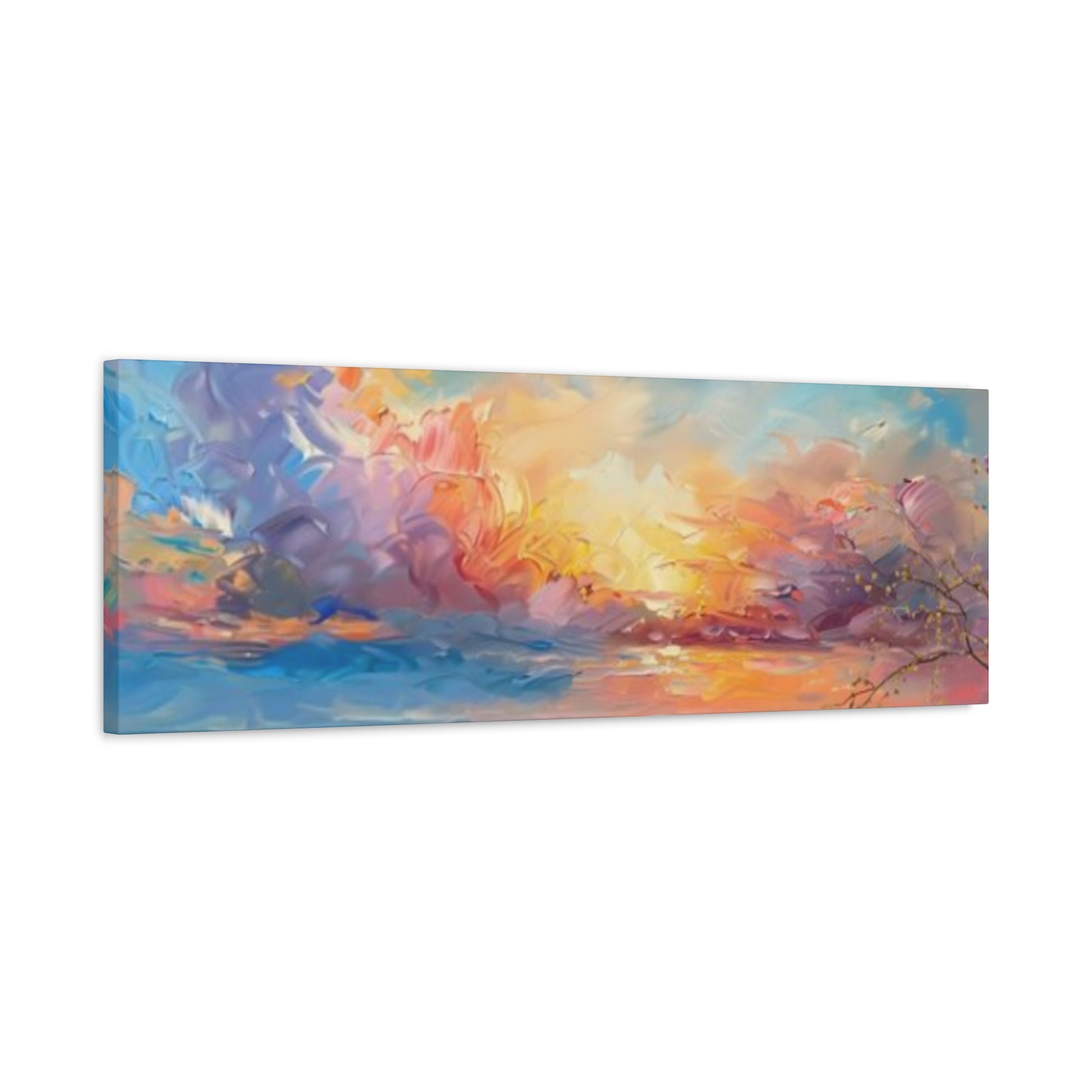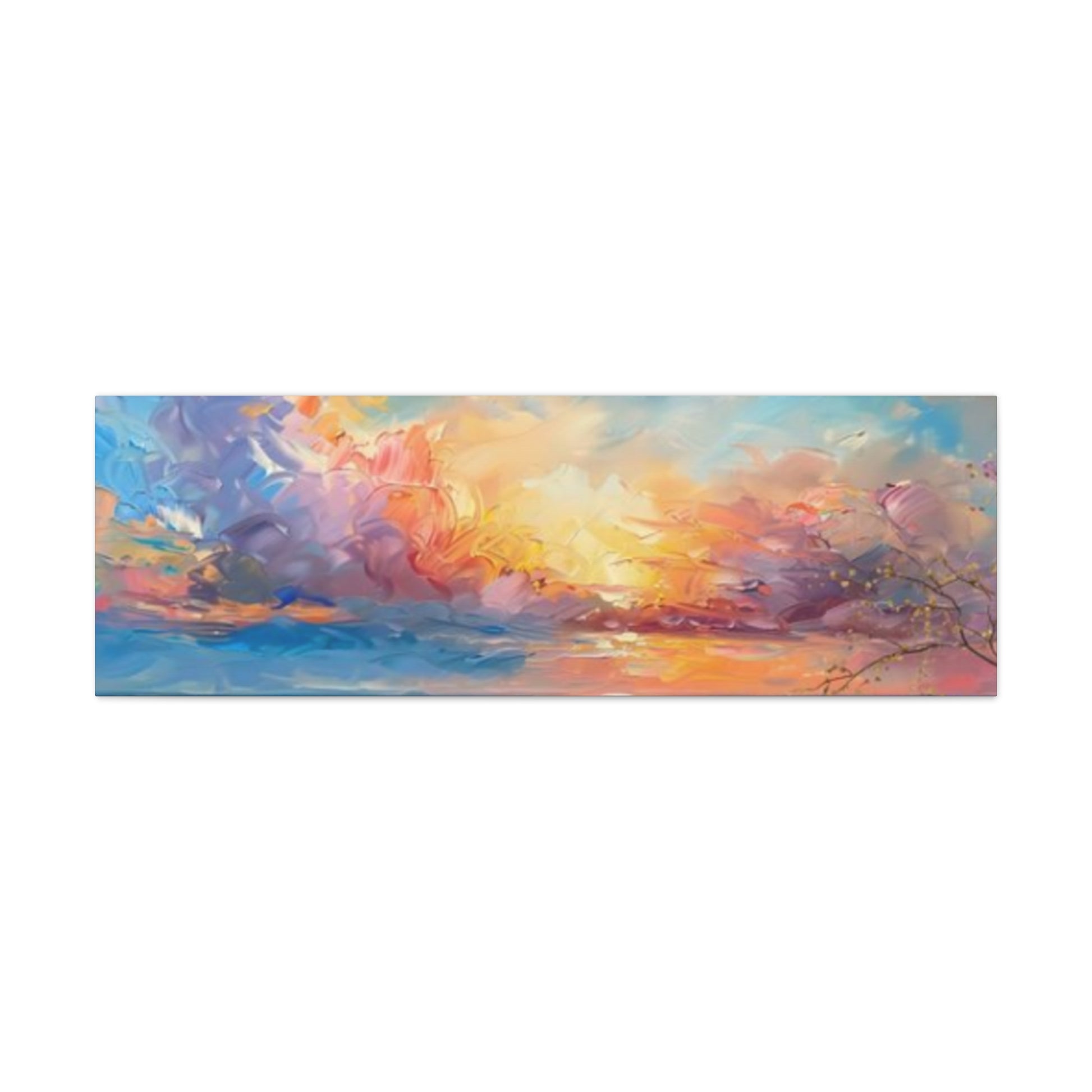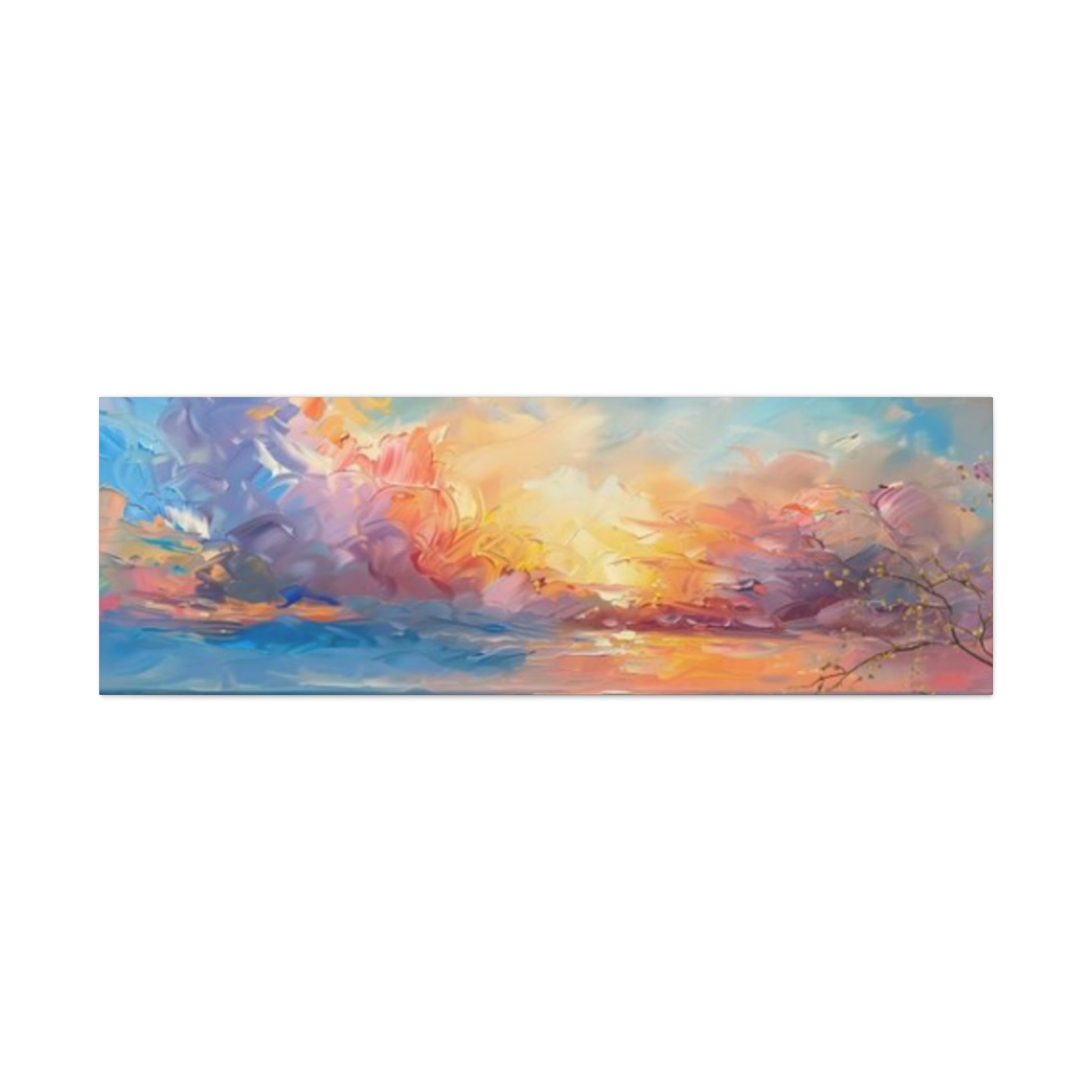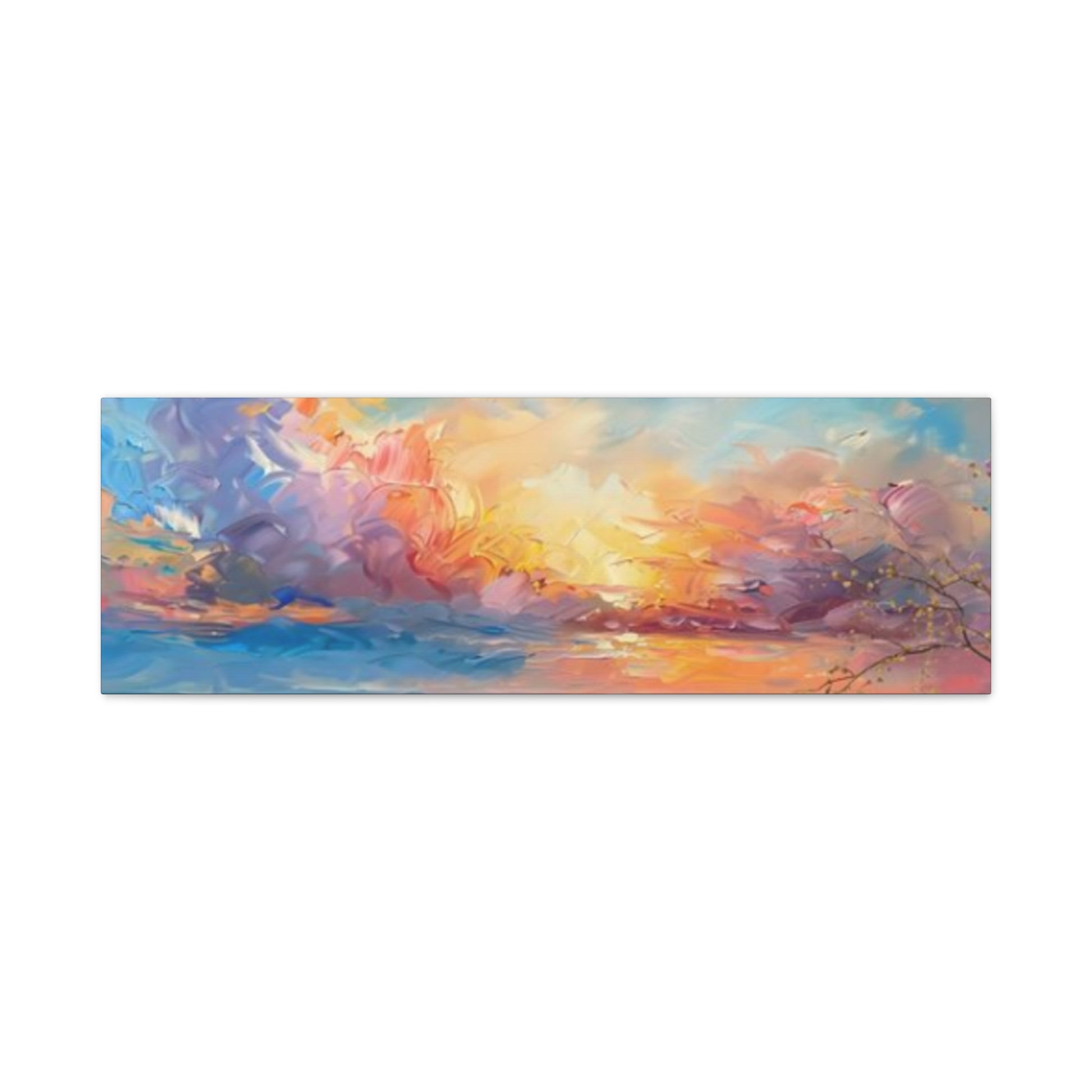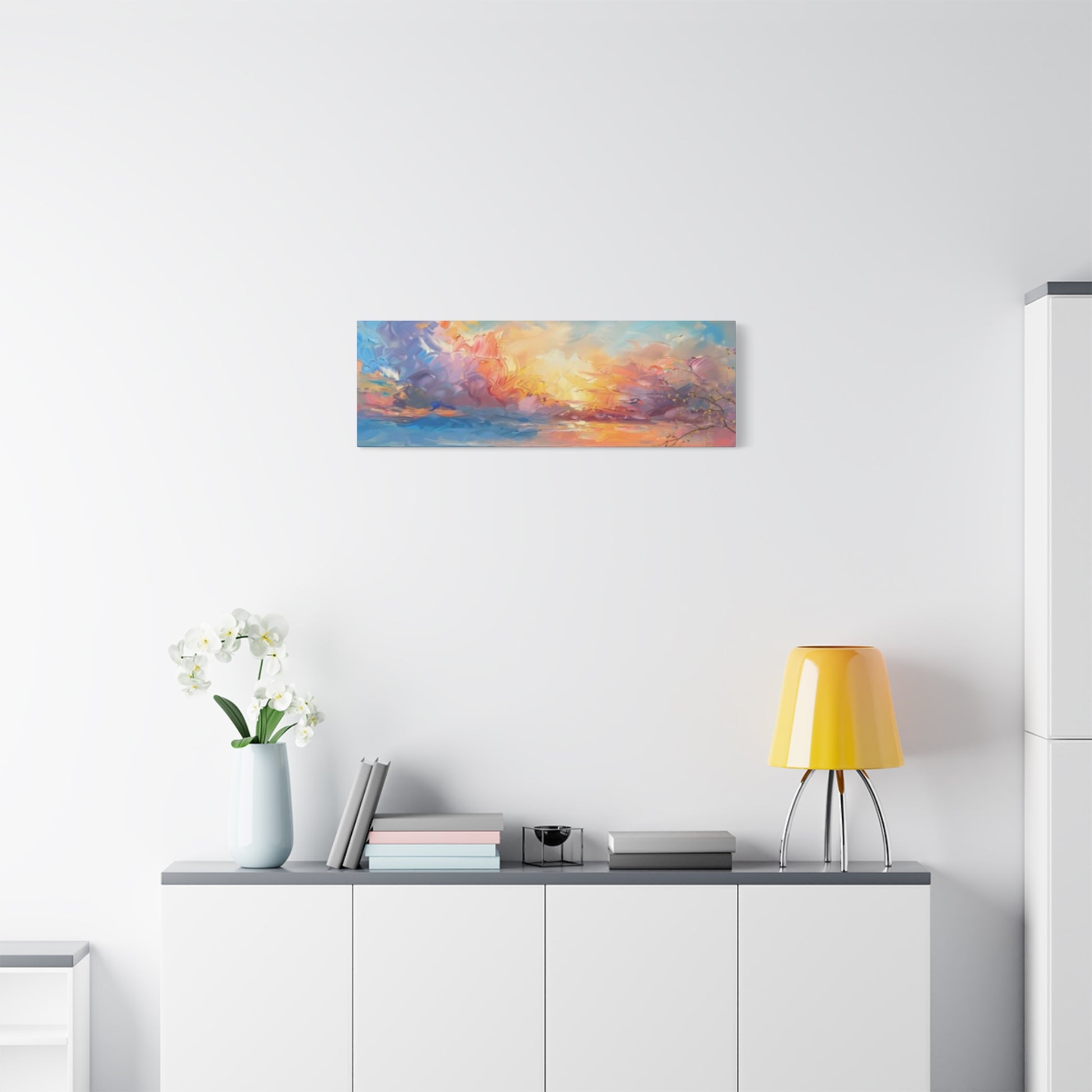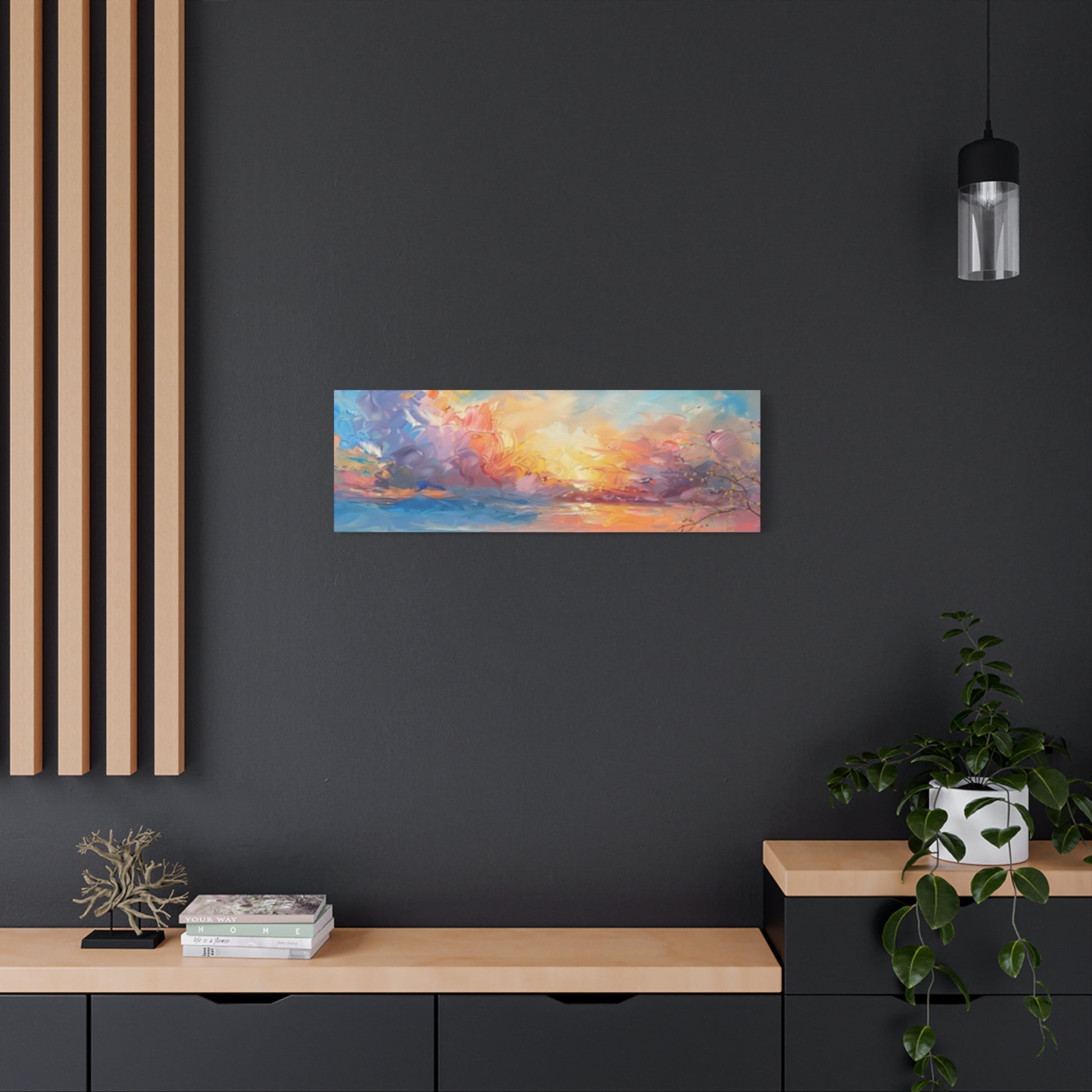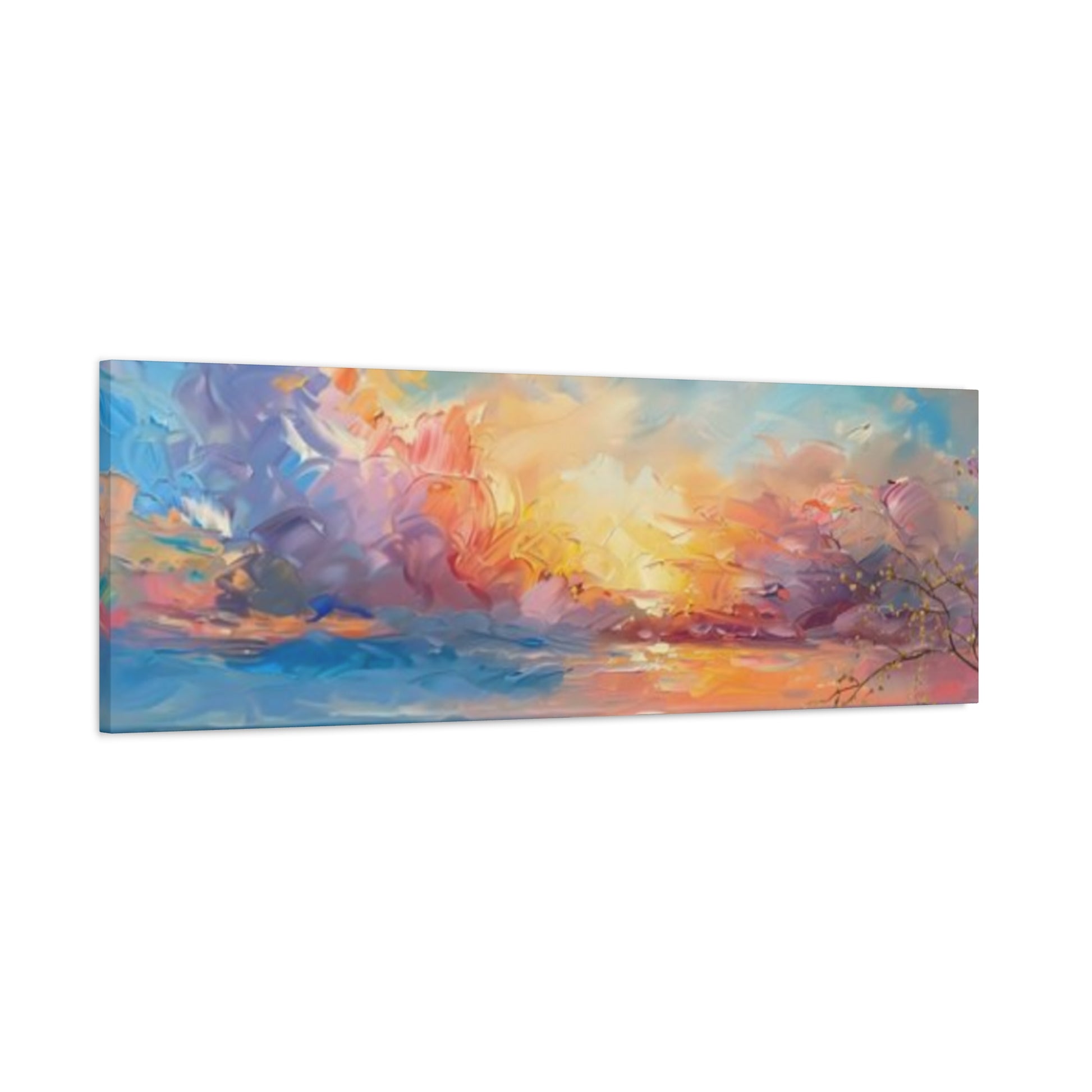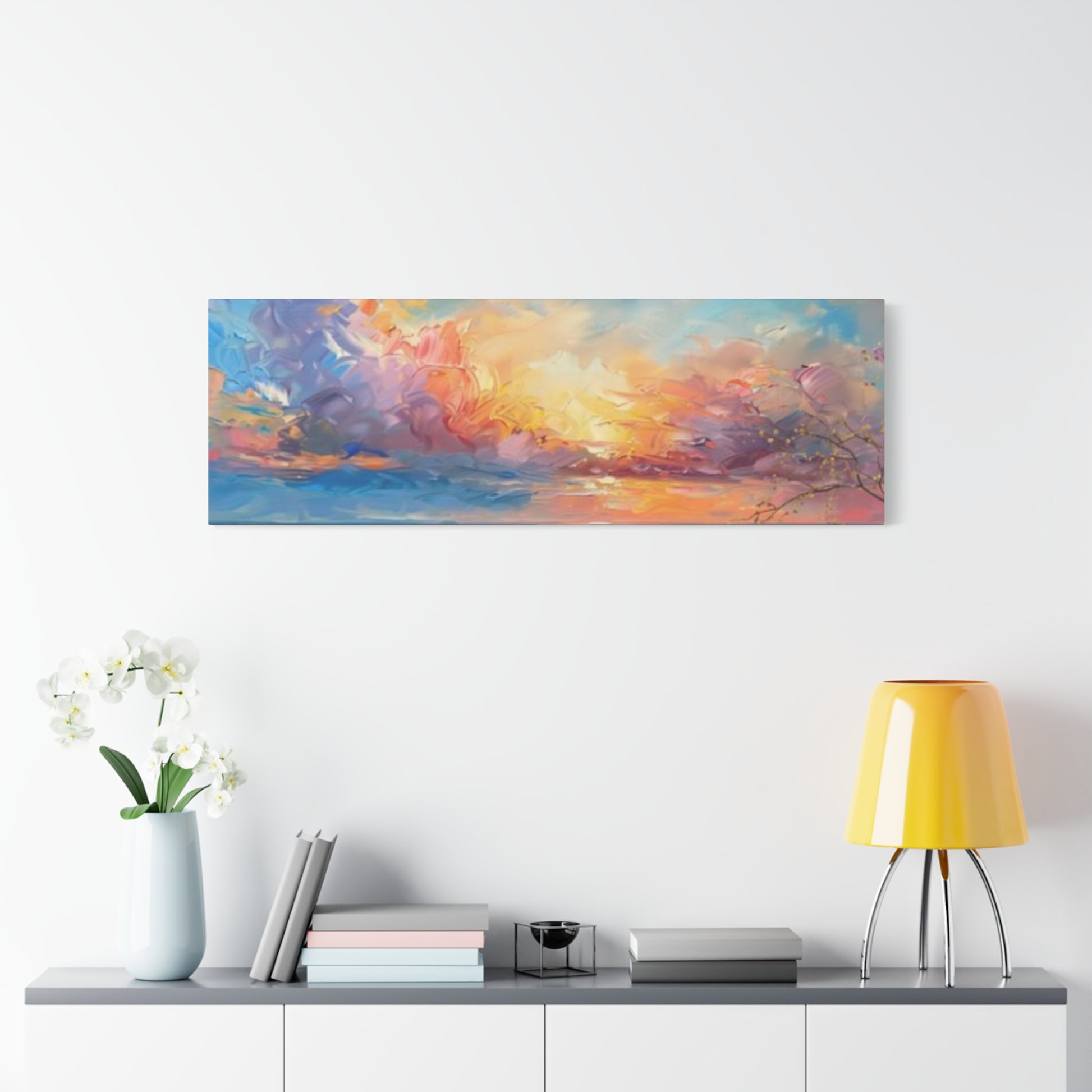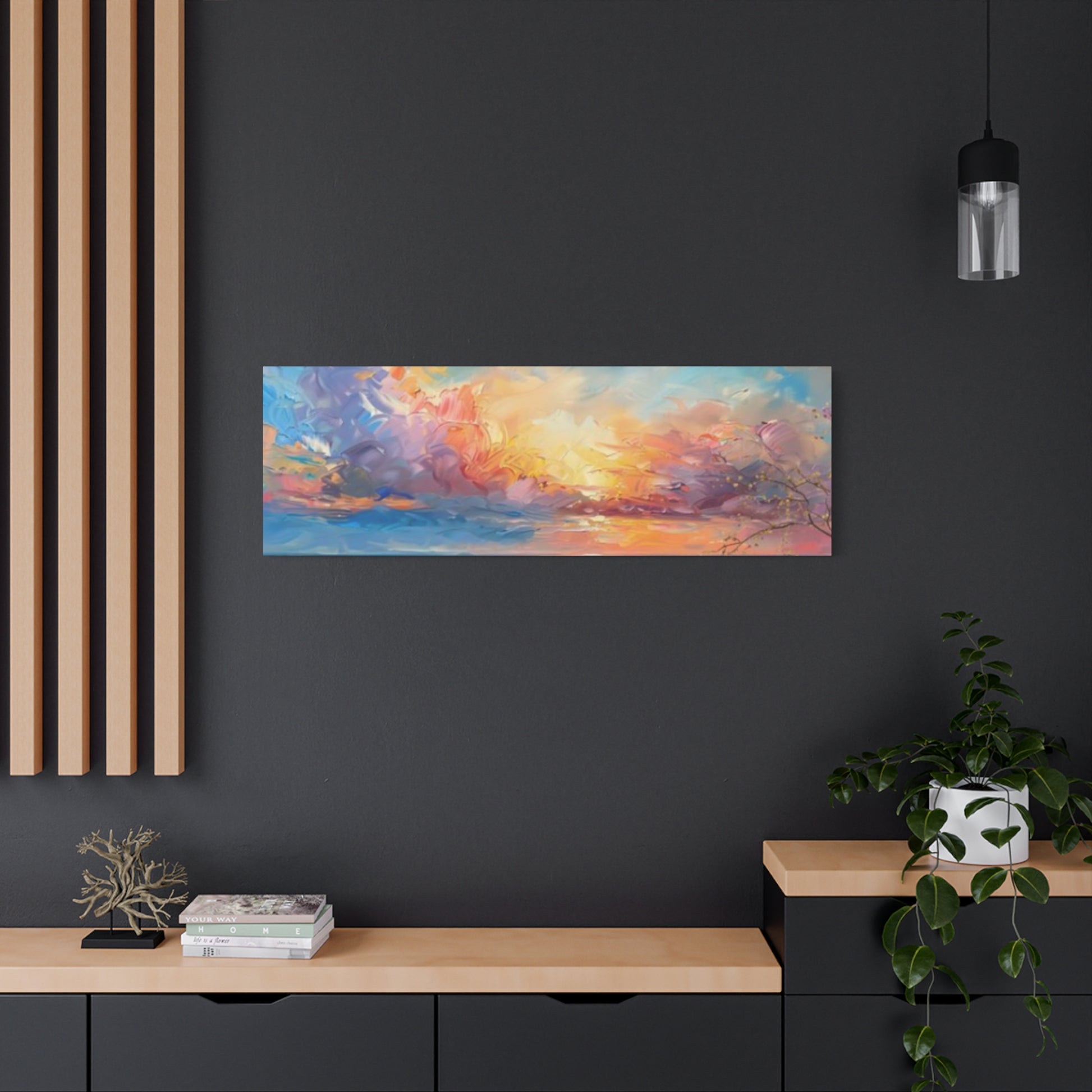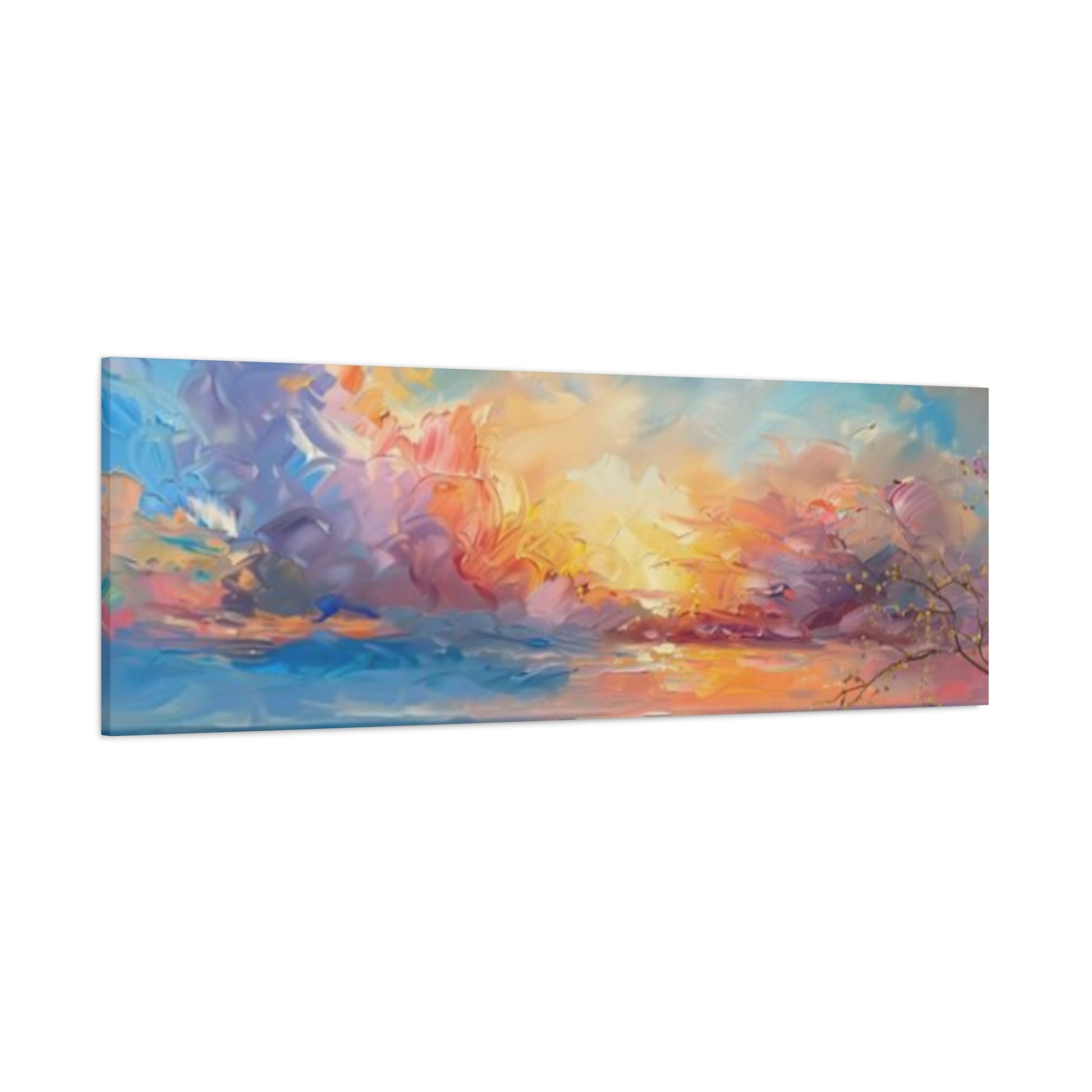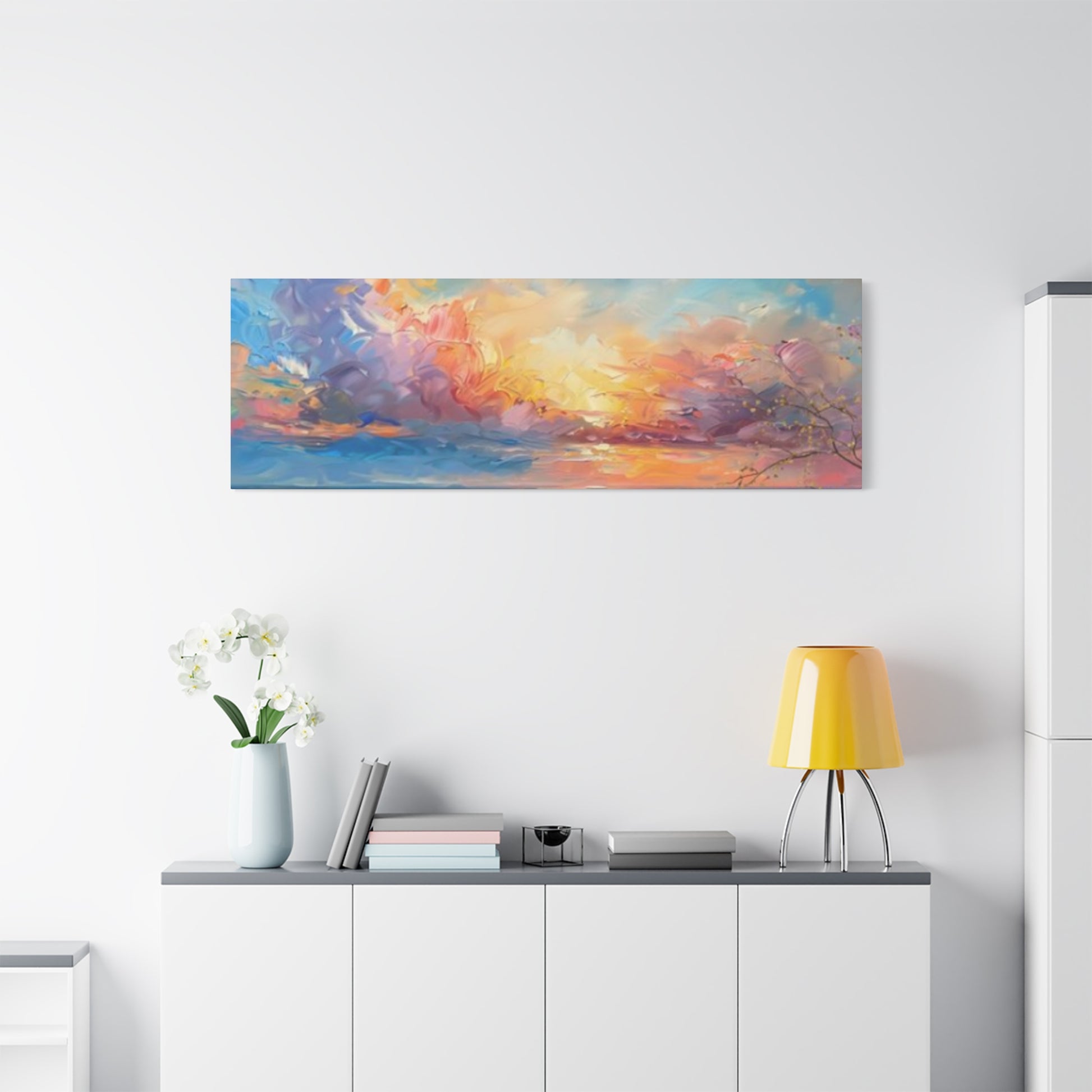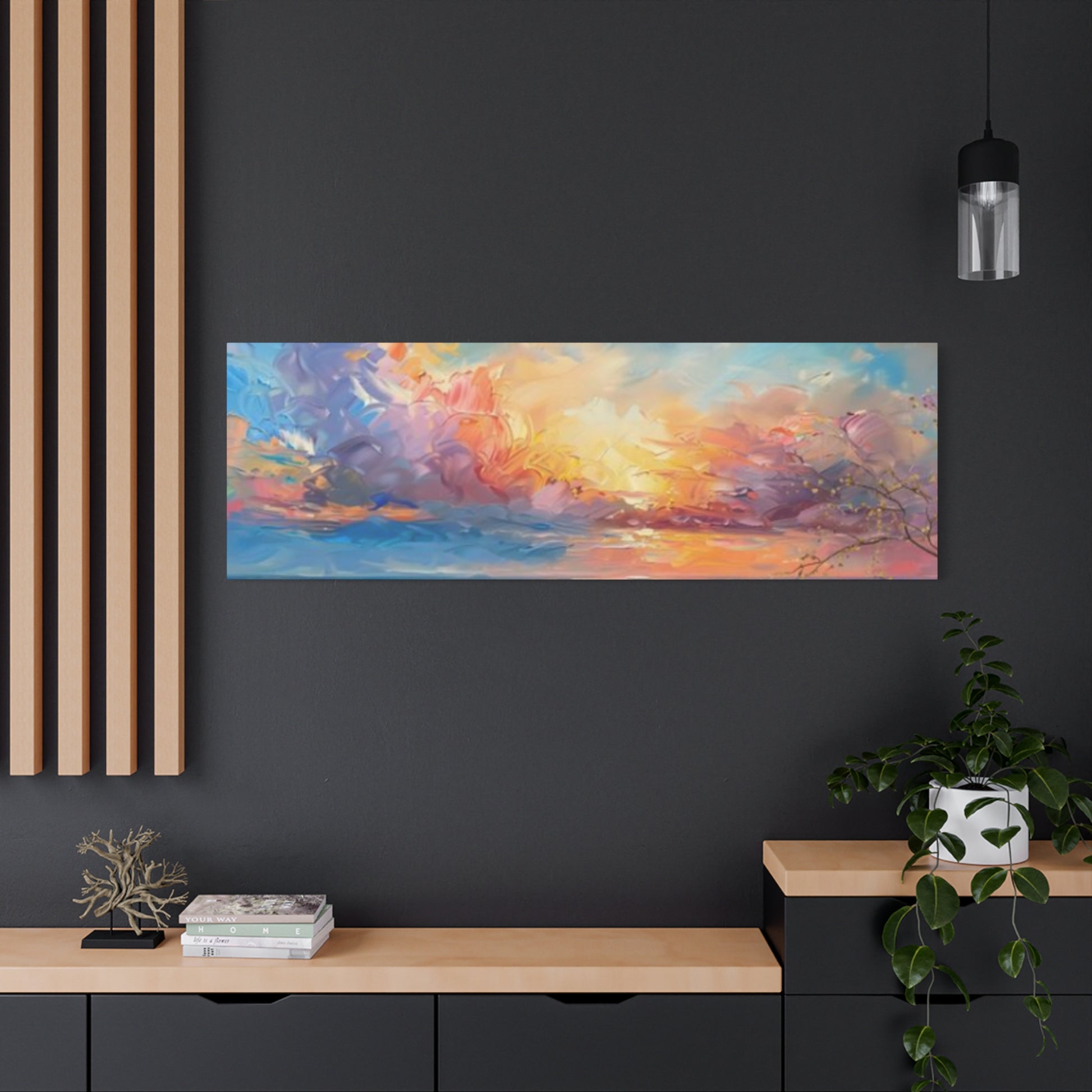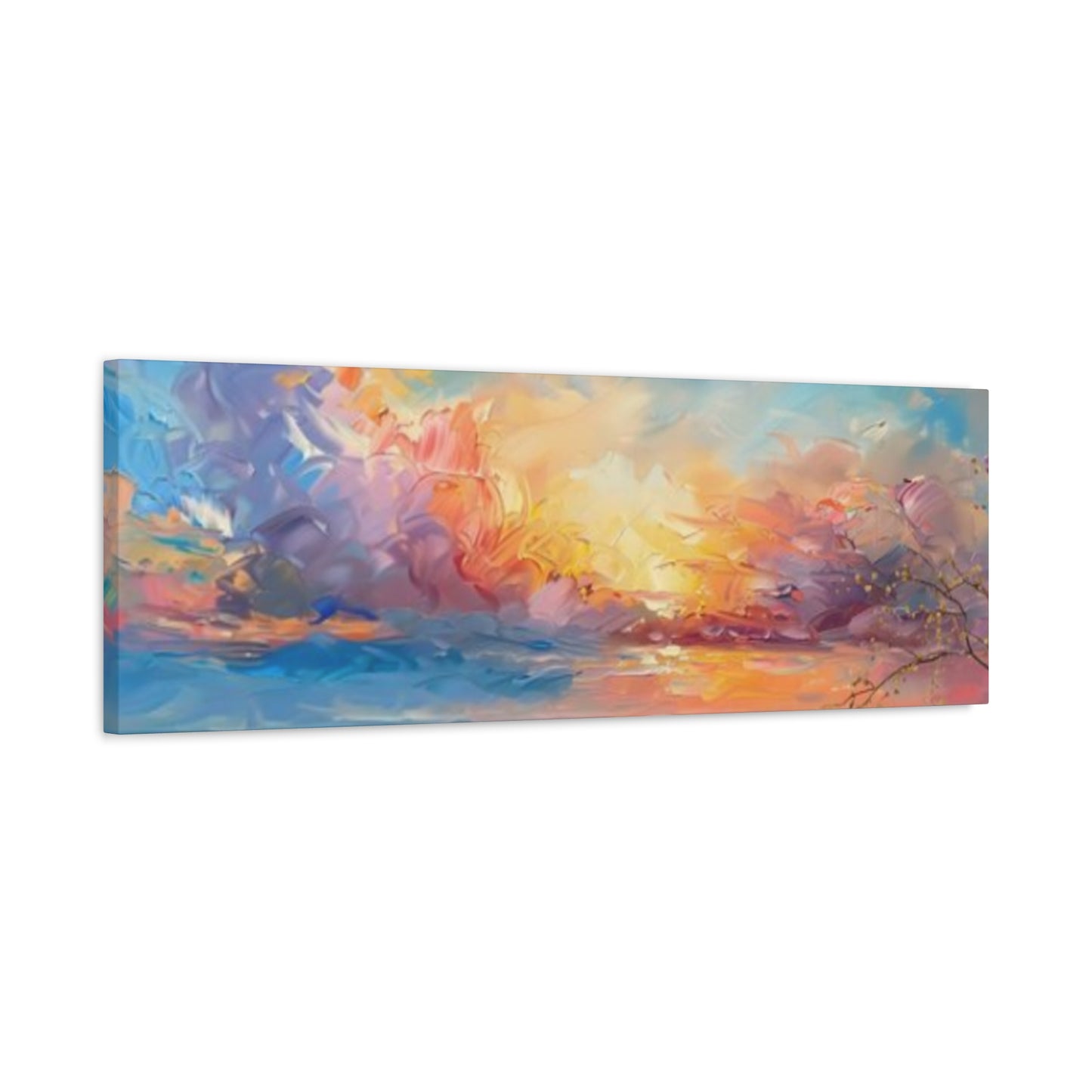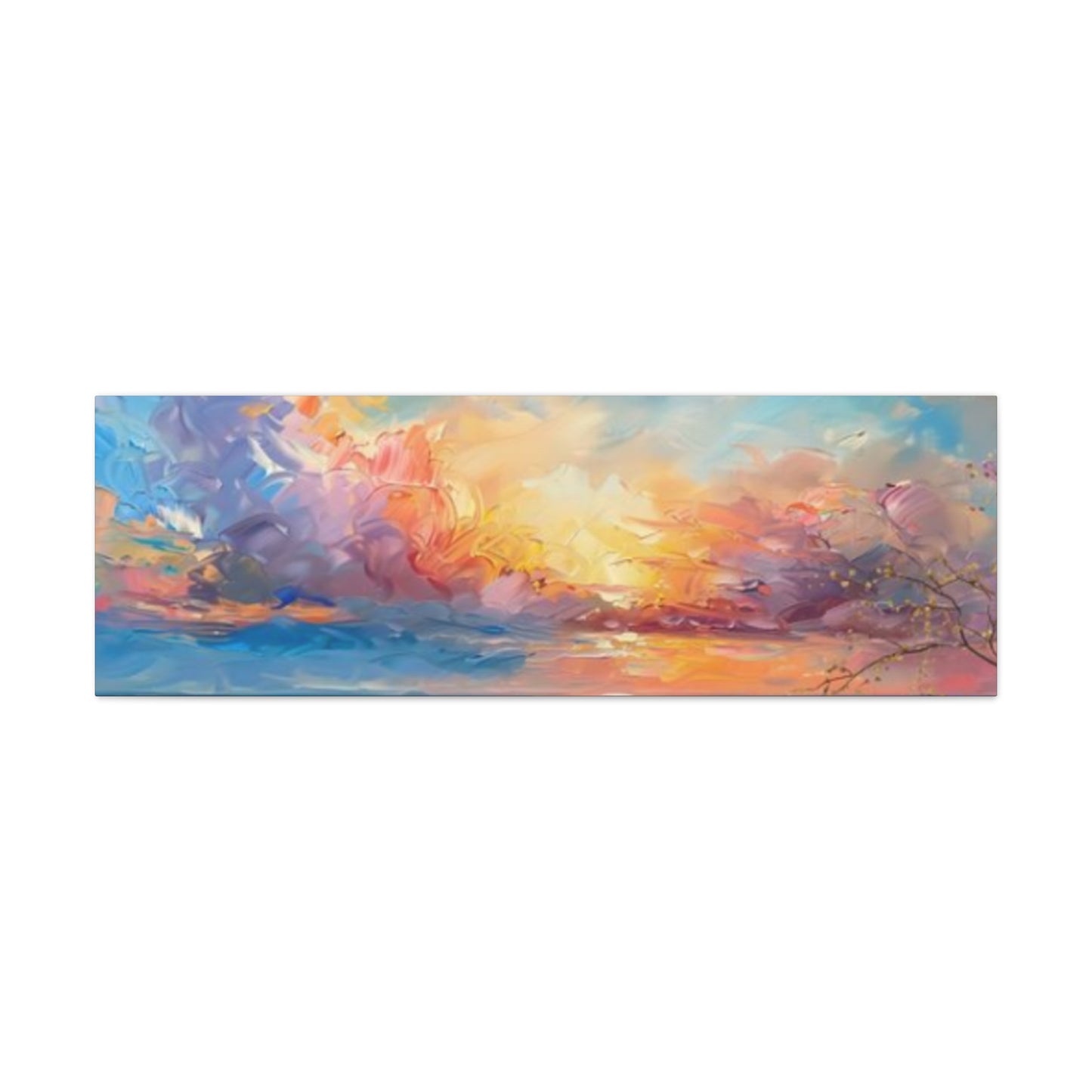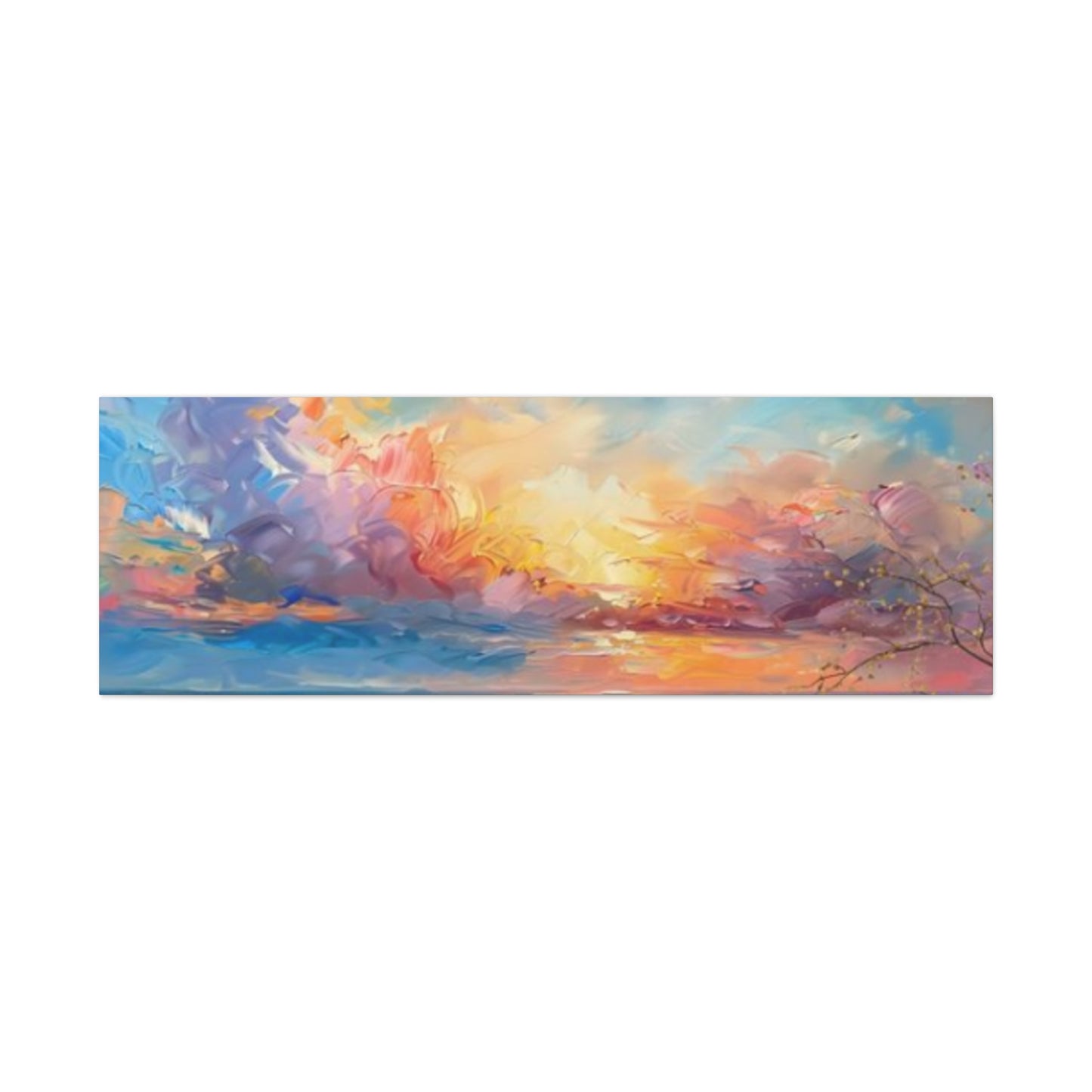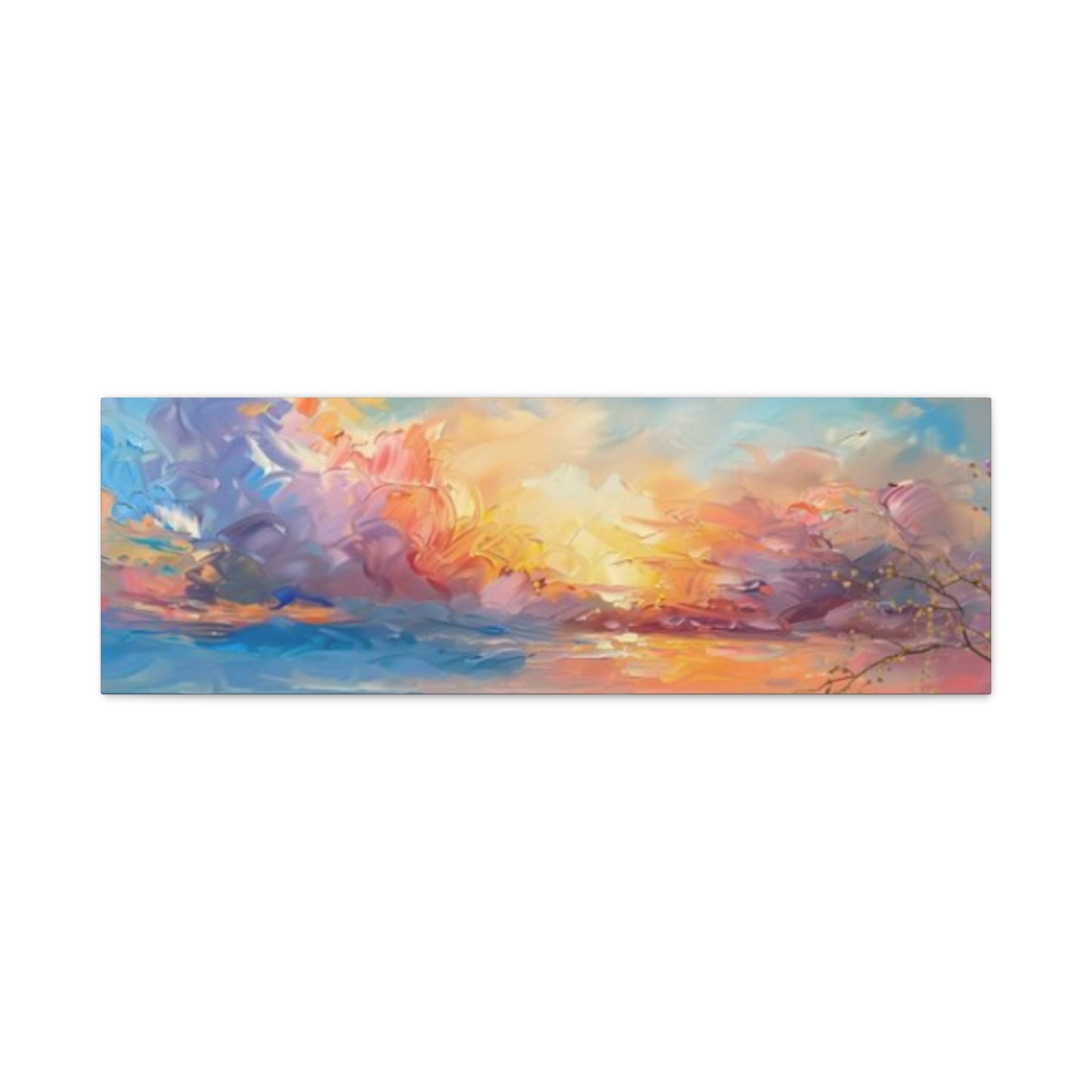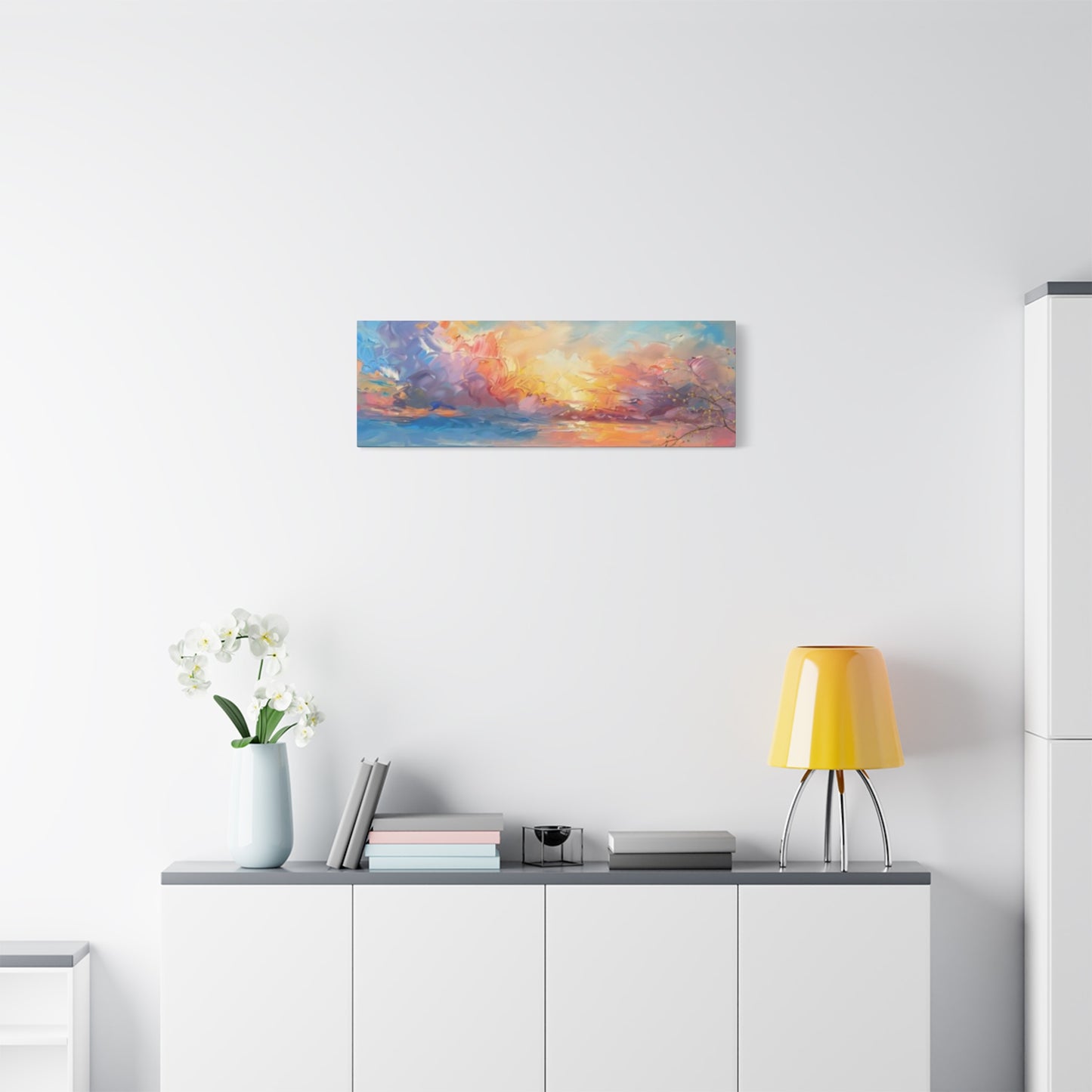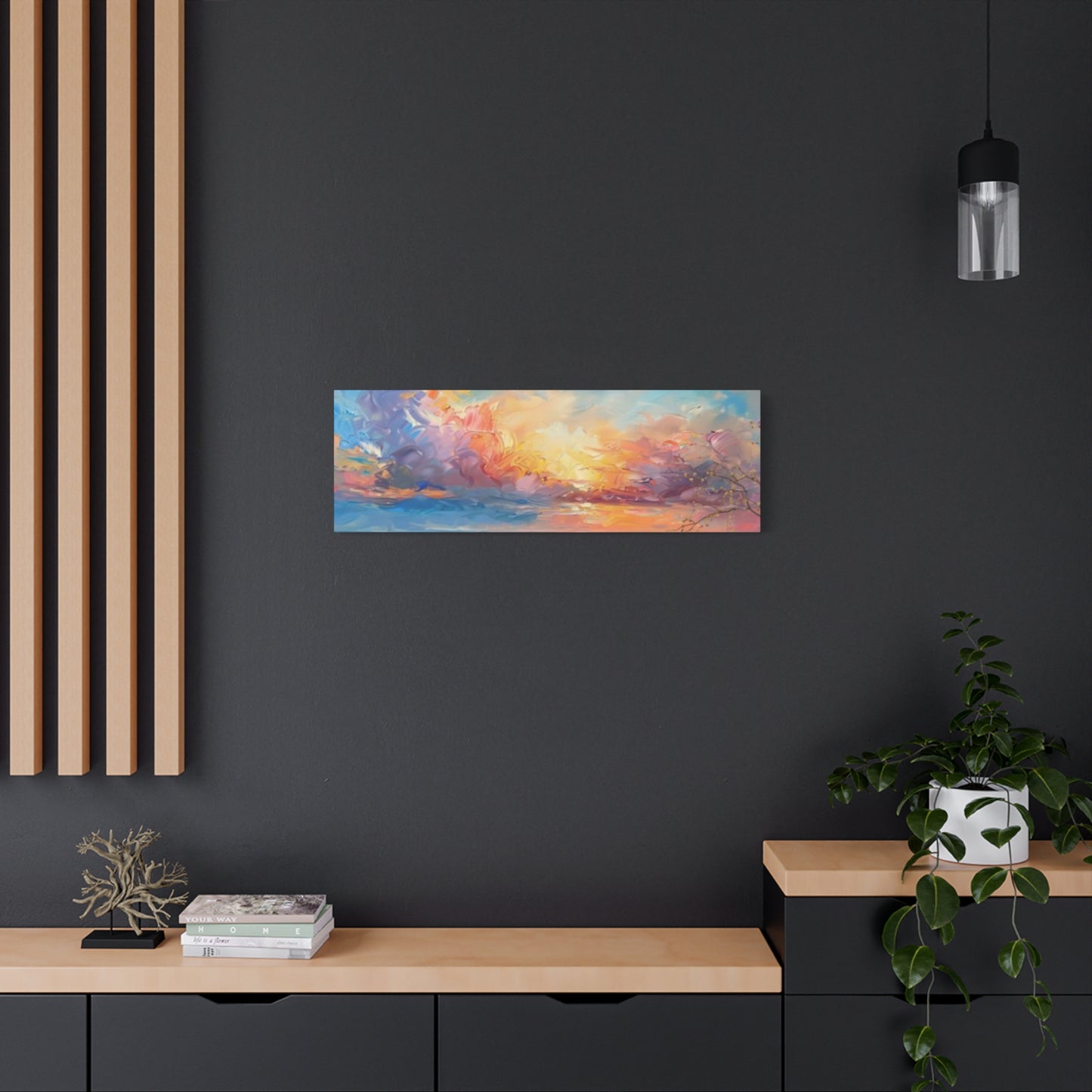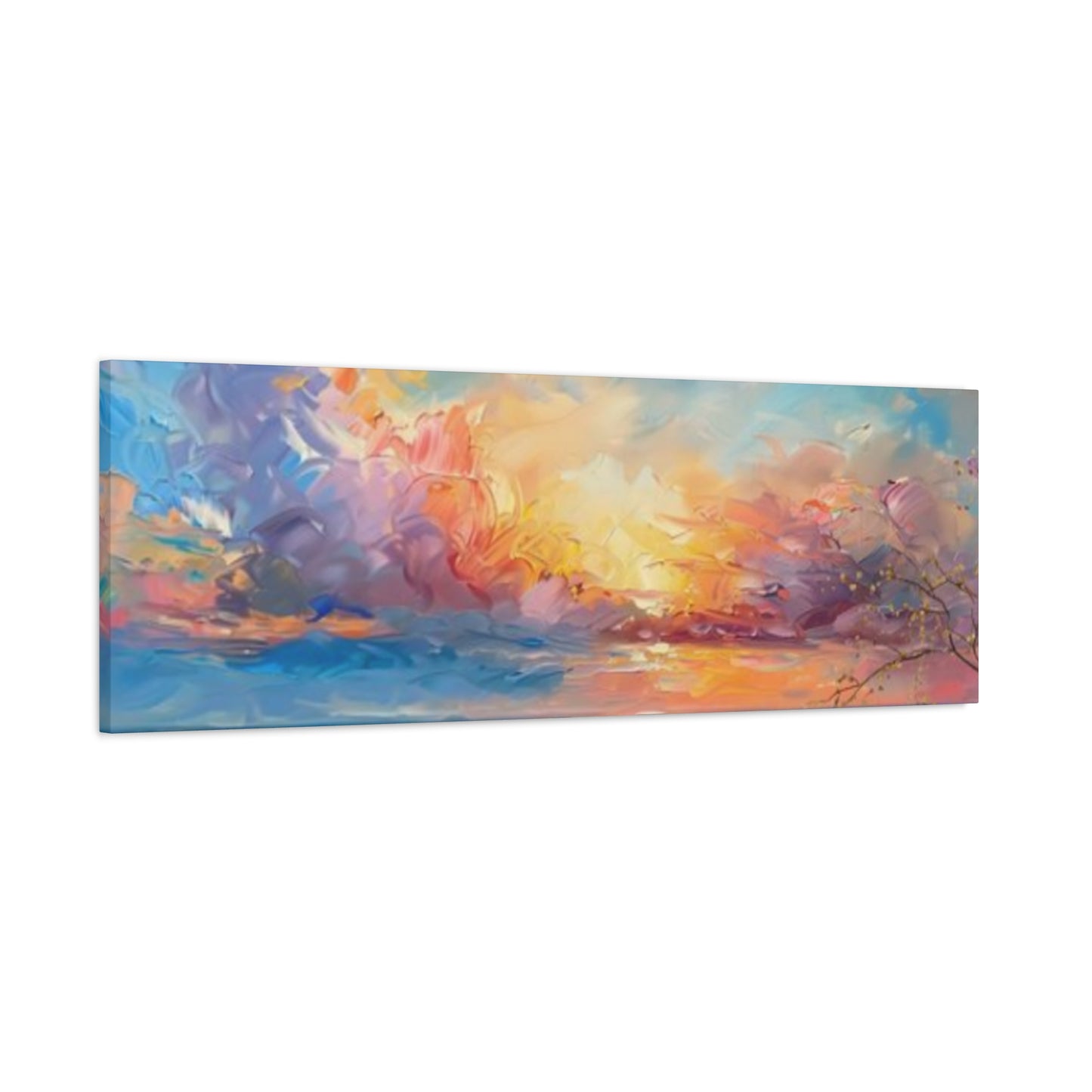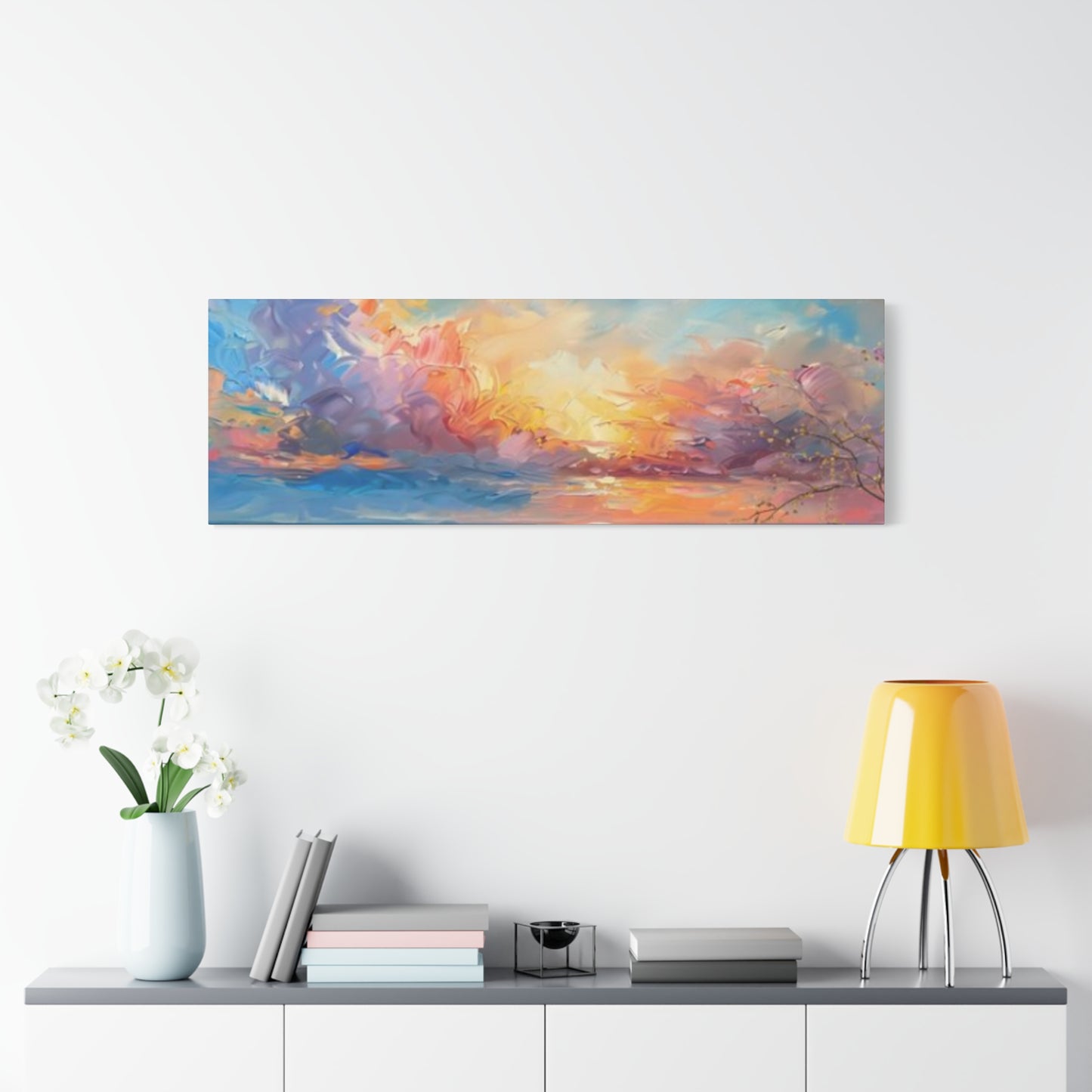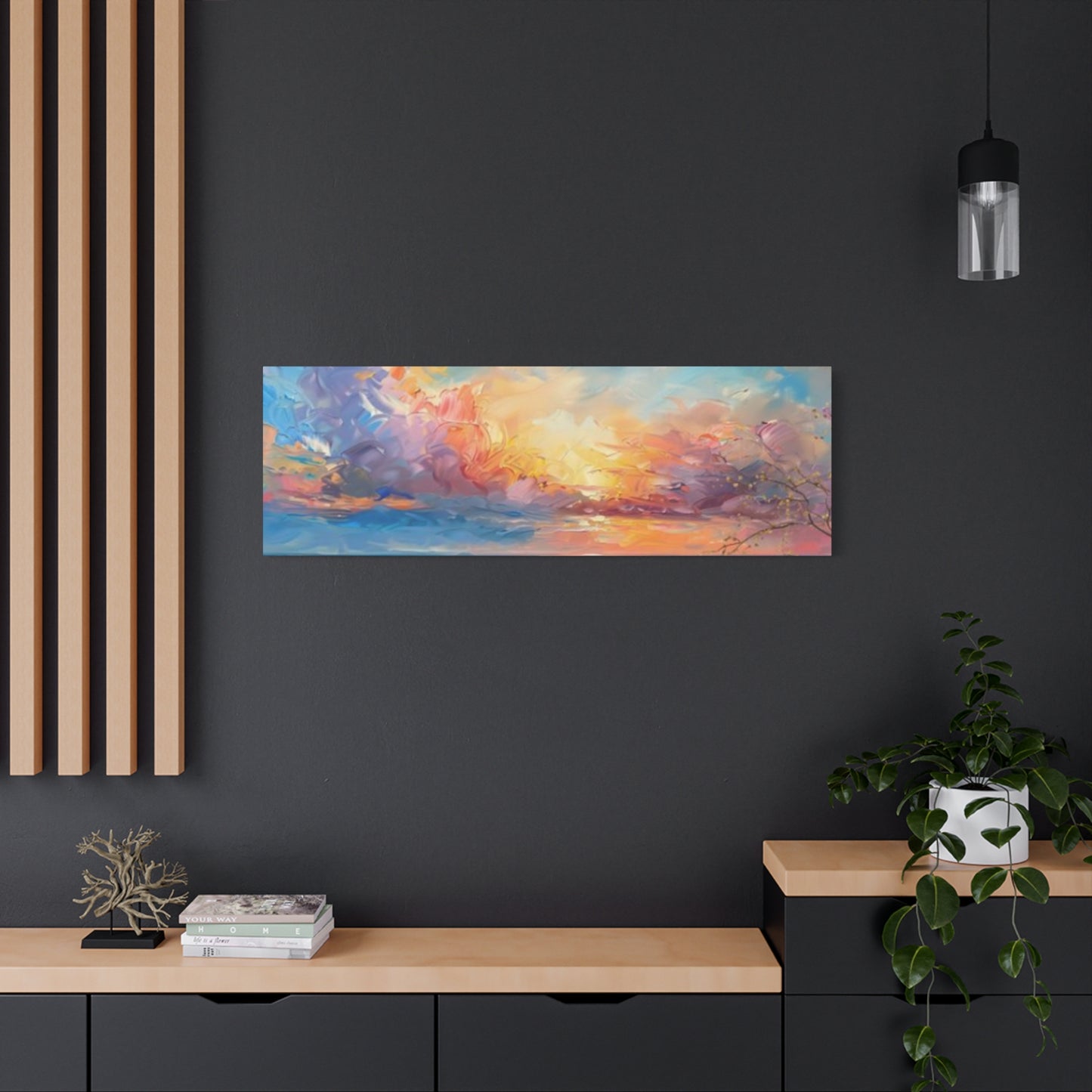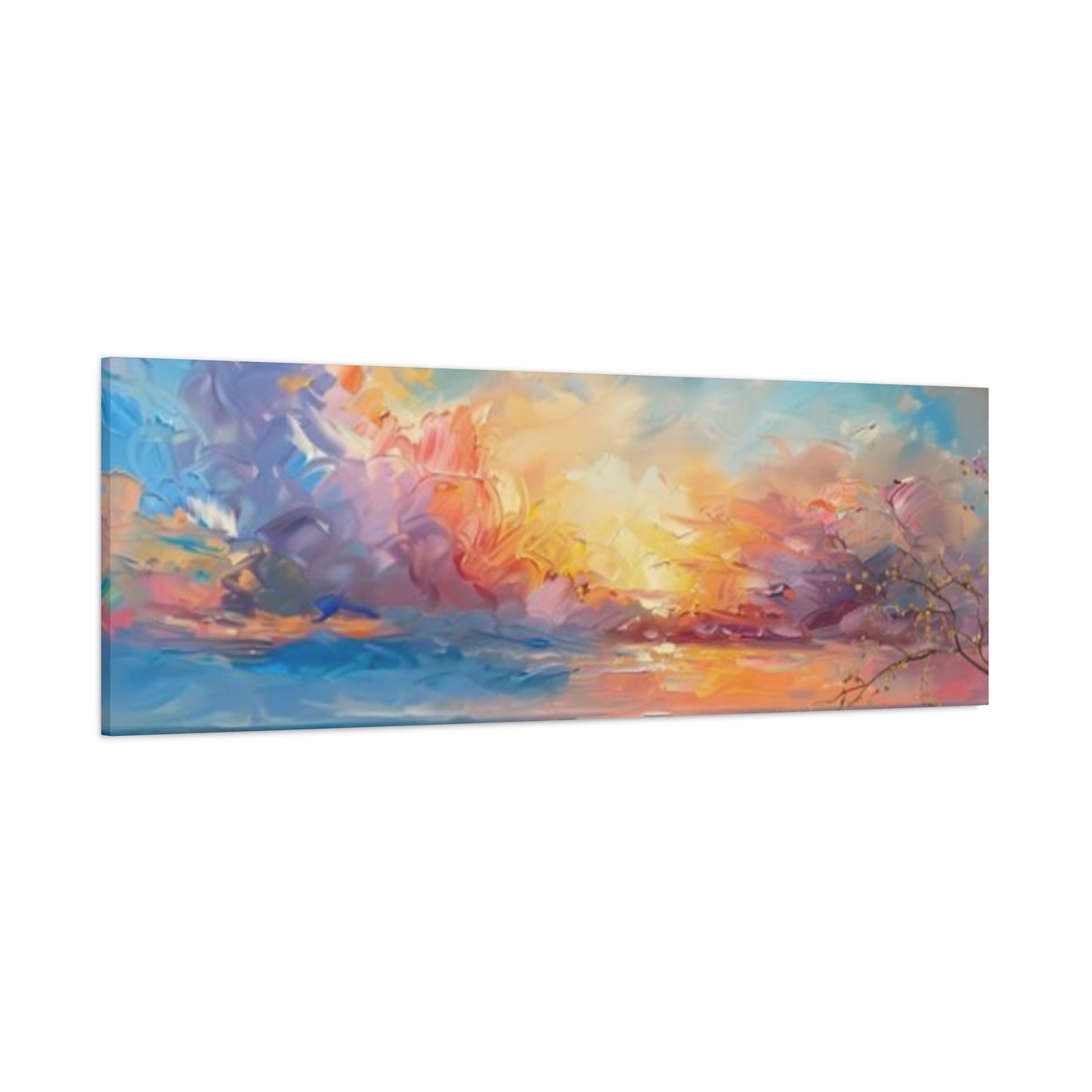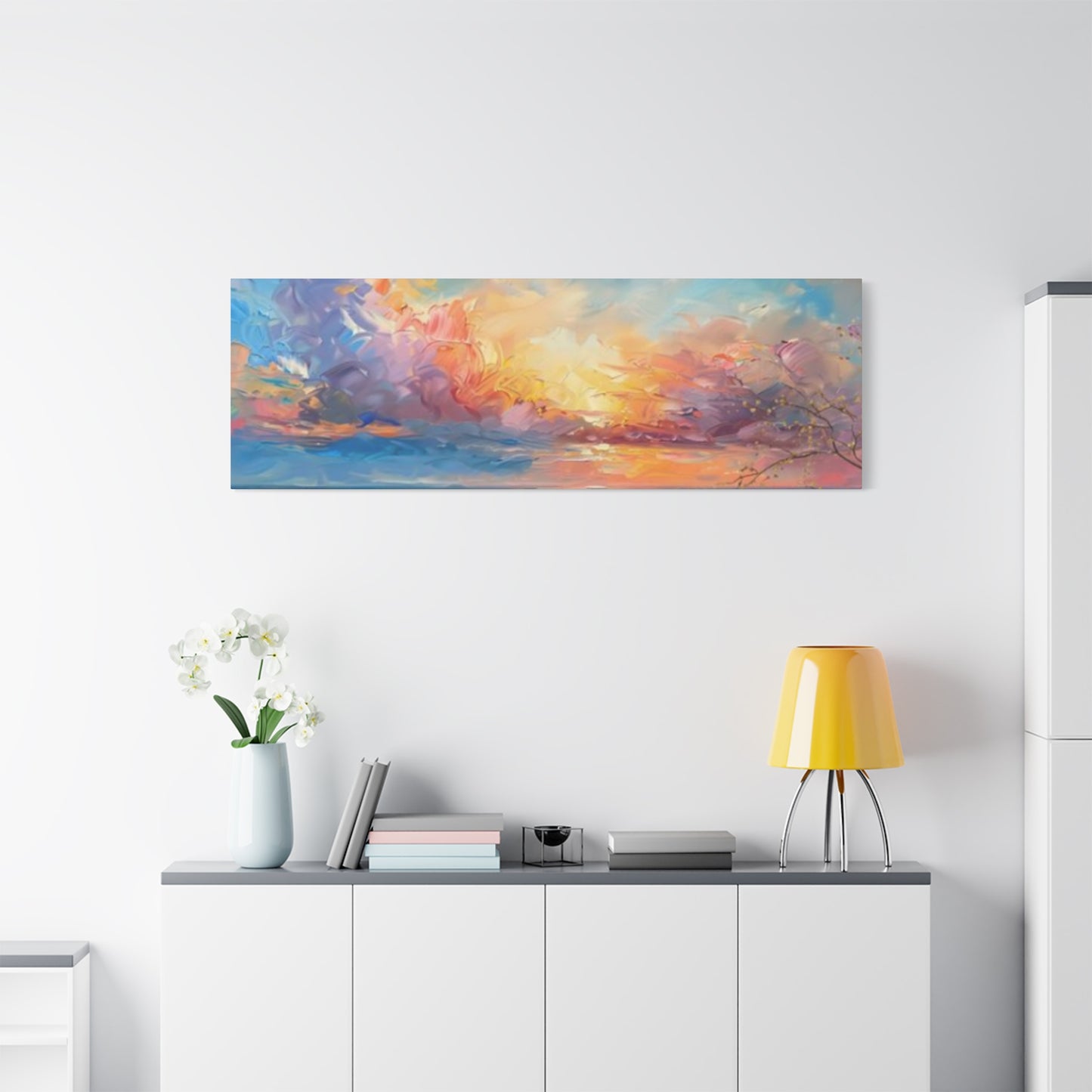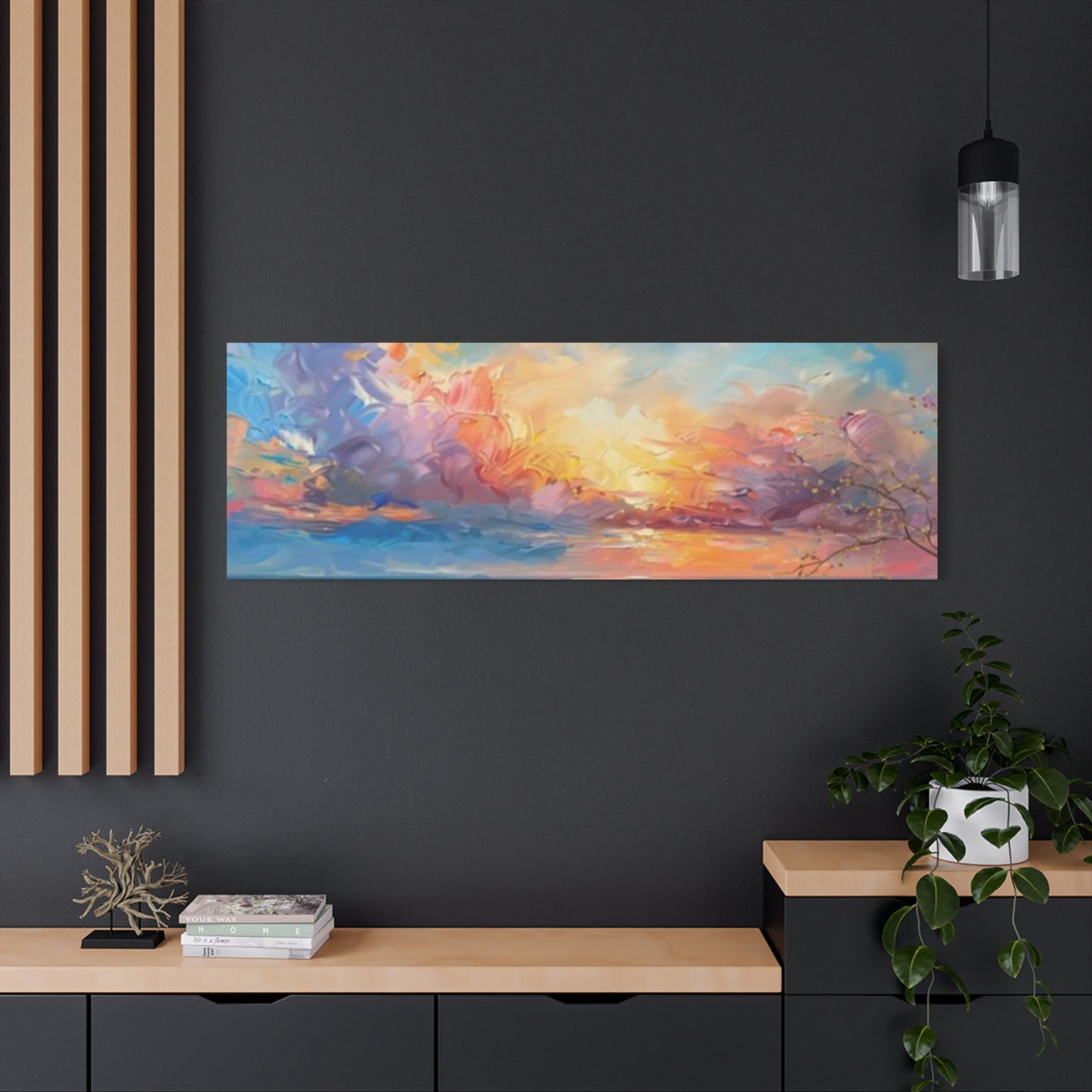Transform Your Walls with Serene Sea Sunset Panoramas Wall art for Ultimate Relaxation
The human desire to connect with nature within our living environments has never been more important than it is in today's fast-paced world. As we spend increasing amounts of time indoors, the psychological benefits of incorporating natural elements into our home décor become increasingly evident. One of the most effective ways to bridge this gap between our interior spaces and the natural world is through the strategic placement of panoramic seascape artwork. These expansive visual compositions capture the serene beauty of oceanic vistas at their most magnificent moments, specifically during the transitional periods when daylight fades into darkness.
The popularity of panoramic seascape prints has grown exponentially as homeowners and interior designers recognize their transformative power in any room setting. Unlike traditional rectangular artwork that adheres to conventional proportions, panoramic formats extend horizontally across your walls, creating an immersive visual experience that draws viewers into the scene. This elongated composition mimics the way our eyes naturally perceive expansive landscapes, making these pieces particularly effective at creating a sense of spaciousness and calm within confined interior areas.
When we examine the psychological impact of seaside imagery, research consistently demonstrates that exposure to water scenes reduces stress levels, lowers blood pressure, and promotes mental clarity. By incorporating panoramic seascape prints into your living environment, you essentially create a window into these restorative natural settings. The continuous viewing of such imagery throughout your day provides ongoing psychological benefits, transforming your home into a personal sanctuary. This form of biophilic design, which emphasizes our innate connection to nature, has become a cornerstone of contemporary interior design philosophy.
The versatility of panoramic seascape artwork extends across all interior design styles, from minimalist modern aesthetics to traditional coastal themes. Whether your home features contemporary furnishings, rustic elements, or eclectic combinations thereof, appropriately chosen panoramic seascape prints seamlessly integrate into your existing décor. This adaptability makes these pieces an excellent investment for homeowners seeking to enhance their spaces without requiring a complete design overhaul. The pieces serve as focal points that anchor room design schemes while simultaneously complementing surrounding elements.
Appreciating the Expansive Qualities of Horizontal Format Wall Displays
The panoramic format represents a significant departure from traditional artwork proportions, and this distinction carries considerable importance when selecting pieces for your interior spaces. A panoramic composition typically features a width that is substantially greater than its height, often maintaining aspect ratios of 2:1 or even 3:1. This extreme horizontal elongation creates unique opportunities for room design while simultaneously presenting specific challenges that require thoughtful consideration.
When you view a panoramic seascape print, your eyes experience a viewing journey that extends across a considerable horizontal distance. This extended visual pathway creates a meditative quality as your gaze travels from one side of the composition to the other, taking in gradually shifting light, color, and atmospheric conditions. The expansive nature of the format encourages prolonged viewing, allowing you to discover new details and subtle compositional elements each time you observe the piece. This engagement factor distinguishes panoramic prints from more conventional artwork formats and contributes to their enduring appeal.
The horizontal emphasis of panoramic compositions makes them particularly effective in rooms with proportions that echo this same horizontal orientation. Long, narrow rooms, hallway spaces, and contemporary homes featuring open-concept designs with extended wall lengths all benefit tremendously from panoramic artwork placement. In these settings, the horizontal composition reinforces and celebrates the room's natural architectural lines, creating visual harmony and balanced proportions. The artwork acts as a visual anchor that prevents these extended spaces from feeling cold or sterile.
Beyond their visual appeal, panoramic formats offer practical advantages for interior design applications. These pieces can cover substantial wall surface areas without requiring the installation of multiple smaller artworks, eliminating the visual fragmentation that sometimes occurs when viewers must navigate between several separate pieces. This unified presentation creates a more cohesive visual experience and requires less wall space dedication compared to gallery-style arrangements of traditional framed prints. The streamlined approach to wall decoration appeals to those who prefer minimalist aesthetics and uncluttered visual environments.
When mounted above furniture pieces like sofas, entertainment centers, or bed frames, panoramic prints create a sense of visual continuity that extends beyond the physical boundaries of the furniture itself. The artwork essentially frames and complements the furniture arrangement, creating an integrated design composition rather than treating the wall art as a separate, disconnected element. This integrated approach to room design demonstrates sophisticated aesthetic sensibility and elevates the overall impact of both the furniture and the artwork.
Investigating the Aesthetic Properties of Oceanic Sunset Illumination
Sunsets occurring over water present visual spectacles that have captivated human observers throughout history. The convergence of several natural phenomena during these transitional hours between day and night creates illumination effects that are virtually impossible to replicate through artificial means. Understanding the specific characteristics that make water-based sunsets so visually compelling helps explain why these imagery themes maintain such enduring popularity in home décor.
During sunset hours, the sun's position low on the horizon causes its light to travel through a significantly greater thickness of Earth's atmosphere compared to midday sun exposure. This extended atmospheric passage filters and scatters the shorter wavelengths of light, specifically the blue components of the visible spectrum, while allowing the longer wavelengths of red, orange, and yellow to dominate. The resulting illumination casts everything in these warm, glowing tones that create an immediate sense of comfort and relaxation in viewers. This color psychology effect occurs at a subconscious level, triggering emotional responses even before conscious observation of the specific scene details.
When sunlight interacts with water surfaces during these golden hour periods, the effect becomes exponentially more dramatic and visually complex. Water's reflective properties transform the sun's rays into shimmering, dancing pathways of light that extend from the sun's position toward the viewer. These light reflections create dynamic movement within the composition, causing the static image to feel alive and animated. The contrast between solid landscape elements and these fluid, luminous reflections generates visual tension that maintains viewer interest and prevents the composition from appearing static or monotonous.
The atmospheric conditions present during sunset significantly influence the visual character of the final image. Clear atmospheric conditions produce brilliant, saturated colors with crisp definition and sharp contrast between illuminated and shadowed areas. Partially cloudy conditions create layered compositions with varied tones and textures, where clouds capture the sun's rays and glow with colors that transition smoothly from warm to cool tones. Hazy or humid atmospheric conditions produce soft, diffused lighting that creates a romantic, dreamlike quality. The diversity of possible visual outcomes explains why sunset seascape imagery never becomes visually repetitive despite consistent subject matter.
Seasonal variations dramatically influence the specific appearance of sunset seascapes. Summer sunsets produce bright, saturated colors with extended golden hour periods that gradually transition to deeper purples and blues. Autumn sunsets often feature additional color complexity as dust and particles in the atmosphere create unusual hues that range from deep reds to mysterious magentas. Winter sunsets occur earlier in the day but often produce more dramatic color contrasts and clearer atmospheric conditions that emphasize color saturation. Spring sunsets frequently showcase delicate color transitions and atmospheric clarity that highlight subtle tonal variations. This seasonal diversity ensures that seascape sunset imagery remains visually interesting and relevant throughout all periods of the year.
Embracing Warm Color Palettes in Horizontal Seascape Canvas Artwork
The color combinations present in sunset seascape imagery create psychological and aesthetic effects that fundamentally influence how these pieces function within interior spaces. Rather than treating colors as separate visual elements, successful panoramic seascape prints employ color as an integrated design language that communicates mood, atmosphere, and emotional resonance. Understanding how specific color combinations influence viewer perception helps explain the broad appeal of seascape sunset imagery across diverse demographic and design preference groups.
Warm color palettes dominating sunset seascape compositions create immediate feelings of comfort, intimacy, and relaxation in viewers. Oranges, reds, yellows, and peachy tones trigger associations with warmth, light, and safety at a psychological level. These colors appear in increasing concentration as we view from left to right across many sunset compositions, creating a visual narrative of gradually intensifying warmth and illumination. The brain interprets this color progression as comforting and nurturing, responding with genuine physiological relaxation and stress reduction. This color-induced emotional response occurs automatically, independent of conscious decision-making processes.
The interplay between warm and cool color tones in well-composed sunset seascapes creates visual sophistication and prevents compositions from appearing overly simplistic or monotonous. While warm tones dominate the composition, carefully distributed cool tones in the form of deep blues, purples, and shadowed areas provide necessary contrast. This tonal balance ensures that no single color becomes overwhelming or visually fatiguing. The contrast also creates visual depth, as cool tones appear to recede while warm tones advance, establishing three-dimensional spatial relationships within the composition. These layered color relationships maintain viewer interest through repeated observations while preventing visual oversaturation.
Metallic and iridescent quality tones appearing in sunset seascape prints, particularly in the light reflections off water surfaces, add dimensional complexity to color presentations. These shimmering, light-catching qualities create visual movement that prevents the composition from appearing flat or static. When viewers shift their viewing position or angle relative to the artwork, the metallic qualities catch light differently, creating a perception of subtle animation. This dynamic quality makes the piece feel alive and evolving rather than static, encouraging repeated viewings and extended observation periods.
The psychological impact of specific color combinations varies significantly based on individual cultural background, personal experience, and learned associations. However, research consistently demonstrates that warm-toned sunset seascape imagery produces universally positive emotional responses across demographically diverse groups. The warm color palettes create associations with positive concepts including safety, comfort, natural beauty, and peaceful relaxation. These universal responses explain why sunset seascape imagery maintains consistent popularity across geographic regions, age groups, and cultural backgrounds.
Architecture and Artistic Wall Treatments
The successful integration of panoramic seascape prints within interior spaces requires careful consideration of how the artwork interacts with existing architectural features, furniture arrangements, and overall design schemes. The process of determining optimal placement involves assessing room dimensions, window placement, lighting conditions, and viewing distances from primary seating areas. A panoramic print that functions beautifully in one room context may appear awkward or disconnected in a different setting without appropriate consideration of these environmental variables.
Wall space selection significantly influences how viewers perceive and engage with panoramic seascape prints. Placing the artwork at eye level when viewers are in their typical positions within the room ensures optimal visual engagement and comfortable viewing angles. In living rooms, this typically means positioning the artwork center-aligned approximately 57 to 60 inches from the floor to the artwork's center point. In bedrooms, slightly lower positioning creates a more intimate viewing experience when observed from a reclined position on the bed. In hallway or entryway spaces where viewing typically occurs while standing and potentially moving, slightly higher placement makes sense to ensure visibility throughout the approach to and passage through the space.
The relationship between panoramic print dimensions and wall surface area dramatically influences visual impact and room proportion perception. An undersized print mounted on an extensive wall surface can appear insignificant or poorly integrated into the space, failing to command viewer attention or create the desired visual anchor. Conversely, an oversized print can overwhelm a modest wall area, creating visual heaviness and imbalance. The optimal scenario involves selecting print dimensions that occupy approximately 50 to 75 percent of the available wall surface between architectural features such as windows, doorways, or furniture perimeters. This proportional relationship ensures that the artwork appears intentionally placed and thoughtfully integrated rather than arbitrarily positioned.
Lighting conditions surrounding the artwork placement location significantly influence how viewers perceive colors, contrast, and visual clarity within the image. Natural light from windows can create glare that obscures image details and washes out colors, particularly in afternoon or morning hours when sunlight angles directly at wall surfaces. Strategic placement that minimizes direct sunlight exposure while maximizing ambient illumination ensures optimal viewing conditions throughout the day. Alternatively, careful selection of frame materials, glass types, or matte finishes can mitigate glare issues in challenging lighting situations. Supplemental artificial lighting positioned above or beside the artwork can enhance color rendering and image clarity in areas with limited natural light.
Enhancing Residential Living Areas Through Strategic Seascape Art Placement
The living room represents the primary social gathering space in most residential settings and serves as an ideal location for panoramic seascape artwork that creates a welcoming atmosphere and encourages relaxation among guests and family members. The specific placement and visual characteristics of the artwork can influence social dynamics, conversation flow, and the overall ambiance of the space. Strategic selection and positioning of panoramic seascape prints transforms living rooms into sanctuaries that promote both social connection and individual stress reduction.
Wall space behind sofas provides an ideal location for substantial panoramic prints, as this positioning creates visual interest for people seated in the space while also serving as an attractive backdrop when viewing the room from other angles. The artwork essentially frames the seating area, creating a visually cohesive ensemble where furniture and art work together as an integrated composition. This placement strategy eliminates the visual vacancy of blank wall space while drawing attention to the seating arrangement itself. Visitors naturally notice both the artwork and the thoughtful integration of décor elements, contributing to an impression of deliberate design sophistication.
Living rooms with entertainment centers or television wall placements benefit from panoramic seascape prints positioned beside, above, or surrounding the media elements. Rather than allowing the television to dominate visual attention completely, accompanying artwork creates visual balance and transforms the wall into a more sophisticated design composition. When the television remains inactive, the artwork provides visual interest and emotional engagement, preventing the wall from appearing as a stark, utilitarian media installation. This balanced approach creates a living room that functions effectively for media consumption while maintaining aesthetic sophistication during inactive periods.
Accent walls constructed specifically to showcase panoramic artwork create dramatic visual impact and serve as definitive room focal points. By painting or treating a single wall with complementary colors and finishes specifically chosen to enhance the artwork, homeowners create intentional design moments that demonstrate sophisticated aesthetic understanding. The accent wall approach works particularly well for panoramic seascapes, as the horizontal orientation of the artwork reinforces and emphasizes the horizontal lines of the wall itself. The resulting composition appears carefully planned and executed rather than haphazardly assembled from available materials.
Corner arrangements utilizing panoramic seascape prints can create intimate reading nooks or conversation areas that feel separated from the larger room volume. Positioning the artwork at the corner with comfortable seating positioned in front of or adjacent to the piece creates a defined space within the larger room. This arrangement psychology encourages relaxation and focused attention, making the area feel like a personal retreat within the broader living environment. The panoramic print essentially creates a psychological boundary that defines the space as distinct from surrounding areas, even in open-concept floor plans lacking physical walls or barriers.
Implementing Calming Bedroom Environments with Panoramic Coastal Imagery
The bedroom represents a personal sanctuary intended for relaxation, rest, and intimate connection with household members. The visual environment within this space directly influences sleep quality, stress levels, and the overall sense of peace and security. Strategic incorporation of panoramic seascape prints specifically chosen for their calming properties can significantly enhance the bedroom environment and promote healthier sleep patterns and improved emotional well-being.
Placement above the bed creates the most natural focal point for bedroom panoramic artwork, as this positioning places the image directly within the viewer's line of sight during reclined positions. Morning awakening to a serene seascape composition establishes a positive psychological foundation for the day ahead, while evening viewing before sleep provides calming visual input that promotes relaxation and facilitates sleep onset. The consistent presence of this imagery creates a psychological anchor associated with the bed space, potentially enhancing the brain's automatic transition into relaxation mode when entering the bedroom environment.
The specific visual characteristics of panoramic seascapes selected for bedroom placement should emphasize calm, peaceful qualities over dramatic, attention-demanding elements. Compositions featuring subdued color palettes, gentle light transitions, and peaceful atmospheric conditions create more conducive sleep environments compared to dramatic, high-contrast images that stimulate active visual engagement. Sunset compositions captured during the hour after the sun has disappeared below the horizon, featuring twilight purples, deep blues, and soft lavender tones, particularly complement bedroom environments by triggering psychological associations with approaching evening and natural sleep times.
Exploring Affordability Considerations for Panoramic Seascape Wall Decorations
The visual and psychological benefits of panoramic seascape artwork come with varying financial investments depending on material choices, artistic approach, reproduction method, and canvas specifications. Understanding the range of available options allows homeowners to select pieces that align with their aesthetic preferences, spatial requirements, and budgetary constraints. The panoramic print market encompasses diverse price points, ensuring that quality artwork remains accessible to audiences with varying financial capacity.
Canvas print options represent an increasingly popular and affordable approach to displaying panoramic seascape imagery. Canvas prints involve transferring photographic or artistic imagery directly onto canvas material using specialized printing processes. This production approach eliminates the expense of traditional framing while creating durable, attractive artwork that withstands extended periods of display without significant degradation. Canvas prints offer superior durability compared to paper prints and resist dust accumulation more effectively than traditional framed pieces. The three-dimensional surface texture of canvas creates visual depth and reduces glare that often plagues traditionally framed prints behind glass surfaces.
Budget-conscious consumers can access quality canvas panoramic prints through mass-production outlets that leverage economies of scale to reduce per-unit costs. These retailers offer standardized sizing options and limited customization features, but maintain competitive pricing that makes affordable artwork accessible to broader consumer groups. Limited-edition offerings from independent artists or smaller production companies often feature more unique compositions and artistic perspectives compared to mass-market options, though typically at slightly higher price points that reflect their specialized production methods and reduced production volumes.
Digital print alternatives on materials such as high-quality paper or synthetic substrates offer additional affordability options with distinct visual characteristics. Paper prints featuring matte finishes eliminate glare while creating a sophisticated, gallery-like appearance. Synthetic substrates provide weather resistance suitable for outdoor applications, making them ideal for covered patio areas or sunroom installations. These alternative materials often cost less than canvas prints while offering specific visual or practical advantages depending on intended application locations and viewing conditions.
Achieving Visual Expansion Through Strategic Panoramic Print Placement
The horizontal orientation of panoramic prints creates unique optical illusions that can significantly influence how viewers perceive room dimensions and spatial relationships. By strategically leveraging these visual phenomena, homeowners can make rooms appear larger, taller, or more spatially expansive than their actual physical dimensions. This optical expansion effect provides particular value in modest-sized homes or apartments where increasing actual square footage remains impossible, but improving perceived spaciousness dramatically impacts residents' comfort and satisfaction.
Horizontal panoramic prints positioned above furniture or at eye level create visual lines that extend across extended wall distances, encouraging the eye to travel horizontally through space. This horizontal eye movement creates a psychological perception of expanded width, making rooms feel more spacious than their actual dimensions. The effect intensifies when panoramic prints span most of the available wall width, creating nearly continuous horizontal lines that emphasize the room's width while minimizing vertical emphasis. This visual strategy proves particularly effective in narrow rooms with limited width but adequate ceiling height, where the emphasis on horizontal dimension creates the perception of improved proportions.
The reflective qualities of water imagery in seascape prints create luminous visual characteristics that appear to increase the light present within a space. Even in rooms with limited natural light, the bright, illuminated qualities of sunset seascape prints enhance the perceived brightness and openness of the environment. This light-enhancing quality contributes to the impression of spaciousness, as brighter spaces typically feel more expansive and welcoming compared to darker environments. The effect intensifies in rooms with white or light-colored wall treatments, where the contrast between wall background and bright image elements creates additional visual pop.
Color saturation levels in panoramic seascape prints influence how effectively the imagery expands visual perception of space. Highly saturated colors with strong contrast between tonal values create vivid, visually commanding compositions that draw and hold viewer attention. While these dramatic compositions enhance visual interest, they may paradoxically make spaces feel somewhat smaller or more contained by their visual intensity. Conversely, more subtly saturated compositions with softer tonal contrasts create an impression of visual softness and expansion, making rooms feel more spacious and less visually confined. Selecting imagery with color saturation levels that balance visual interest with spatial expansion objectives optimizes the room design outcome.
Understanding Reflective Water Surface Imagery in Panoramic Compositions
Water surface reflections constitute one of the most visually compelling and aesthetically significant elements in seascape imagery. The interaction between sunlight and water creates luminous pathways of reflected light that transform water surfaces from passive landscape elements into dynamic, animated visual phenomena. The presence of distinctive reflected light patterns fundamentally influences the emotional resonance and aesthetic sophistication of panoramic seascape compositions. Understanding the physical phenomena creating reflected light patterns enhances appreciation for imagery featuring these elements and informs selection criteria when evaluating prospective artwork.
Specular reflection occurs when light strikes smooth water surfaces at specific angles, creating mirrorlike reflections with clear definition and bright luminosity. During sunset hours when sun angles approach the horizon, conditions favor specular reflection that creates bright, clearly defined reflected light pathways. These reflections create visual movement and animate static water surfaces, preventing compositions from appearing stagnant or overly peaceful. The resulting imagery presents dynamic visual interest that maintains viewer engagement and encourages repeated observations as viewers discover new details within the complex reflected light patterns.
Diffuse reflection occurs on water surfaces disrupted by wind, waves, or water movement that breaks smooth surface continuity into countless irregular reflective angles. Rather than creating clearly defined light pathways, diffuse reflection produces shimmering, scattered light effects that create visual complexity and romantic atmospheric quality. The resulting imagery appears softer and less dramatically illuminated compared to specular reflection, creating more meditative visual experiences. Diffuse reflection conditions often occur during storm approaches or periods of active wave generation, creating dynamic seascape compositions with perceived movement and energy.
Combined specular and diffuse reflection creates compositional complexity with both clearly defined reflected light elements and softer, more subtle light distribution. The interplay between these reflection types creates sophisticated visual environments with layered complexity that rewards extended observation. Compositions featuring this mixed reflection quality present the most visually sophisticated seascape imagery, offering both the dynamic visual interest of specular reflection and the meditative qualities of diffuse reflection. The resulting balanced visual approach appeals to broad aesthetic preferences and functions effectively in diverse interior design contexts.
Reflection manipulation during post-processing significantly influences the visual character and emotional impact of final panoramic prints. Enhancing reflection brightness and clarity creates more visually dramatic compositions that command viewer attention through luminous intensity. Softening reflections through subtle adjustments creates more romantic, atmospheric visual qualities. Selective reflection enhancement that emphasizes specific reflected light elements while leaving others understated creates visual hierarchies that guide viewer attention toward particular compositional features. These post-processing manipulations transform base photographic captures into compositions with distinctive artistic character and intended emotional resonance.
Styling Techniques for Panoramic Artwork Integration Within Residential Environments
Strategic styling approaches that coordinate panoramic seascape prints with surrounding furnishings, accessories, and architectural features create integrated design compositions that appear intentionally planned rather than randomly assembled. The process of creating cohesive, visually sophisticated environments requires thoughtful consideration of how artwork relationships influence overall spatial aesthetics and functional utility. Understanding established styling principles allows homeowners to create professional-quality interior environments without requiring formal design training or specialized professional consultation.
Monochromatic styling approaches utilize varying tones and intensities of single color families to create harmonious, sophisticated visual environments. Selecting wall treatments, furnishings, and accessories featuring color families represented within panoramic seascape prints creates visual continuity and unified aesthetic impression. For example, incorporating soft peachy tones referenced in sunset imagery through wall treatments, upholstery, and accessory selections creates a cohesive design scheme where panoramic prints function as natural visual anchors. This monochromatic approach works particularly effectively in contemporary or minimalist interior design schemes emphasizing visual simplicity and intentional restraint.
Complementary styling combines colors positioned opposite one another on the color wheel to create dynamic visual tension and sophisticated color relationships. Incorporating colors that complement dominant hues within panoramic seascape prints creates visually sophisticated environments where furnishings and artwork engage in intentional visual dialogue. For example, incorporating cool teal or turquoise tones through upholstery or accent colors creates visual contrast with warm orange and red tones present in sunset imagery, establishing sophisticated color relationships. This complementary approach creates more visually active, energetic design environments compared to monochromatic schemes.
Texture coordination creates multi-sensory design experiences where visual aesthetics integrate with tactile qualities and perceived material authenticity. Incorporating natural materials and organic textures that echo qualities present in seascape imagery creates authentic coastal environments. Rough stone textures, weathered wood surfaces, and woven natural fibers create tactile richness that complements smooth canvas or printed surfaces. This texture-focused styling approach transforms interior environments from purely visual experiences into multi-sensory spaces that engage sight, touch, and spatial perception.
Layering design elements creates visual depth and prevents spaces from appearing flat or one-dimensional. Rather than selecting single statement pieces, layering multiple complementary elements at varying heights and positions creates complex visual compositions with perceived three-dimensionality. Combining panoramic seascape prints with framed smaller imagery, decorative objects, and carefully arranged furnishings creates gallery-like presentations that transform walls into curated art installations. This layering approach prevents visual monotony and encourages sustained viewer engagement through compositional complexity.
Evaluating Quality Metrics and Authenticity in Panoramic Print Products
The panoramic seascape print market encompasses substantial variability in production quality, material durability, color accuracy, and overall artistic merit. Distinguishing between quality products and inferior alternatives requires understanding specific quality indicators and assessment criteria that reveal technical sophistication and production standards. Developing evaluation skills allows informed purchasing decisions that maximize value and satisfaction with selected artwork.
Image resolution represents a fundamental quality indicator determining the level of detail preservation and visual clarity possible in final prints. High-resolution source images with pixel densities exceeding 300 dots per inch allow production of large-format prints maintaining sharp detail and visual clarity throughout compositions. Lower resolution source images suffer degradation at enlarged scales, resulting in blurred details and loss of compositional complexity. Requesting resolution specifications before purchase ensures that selected prints maintain adequate visual clarity at intended display dimensions, preventing disappointing outcomes after purchase completion.
Color fidelity and accuracy significantly influence the aesthetic appeal and emotional impact of panoramic seascape prints. Quality production processes employ color management systems that ensure accurate reproduction of intended color characteristics without excessive distortion or unintended color shifts. Lower-quality production methods may produce color inaccuracies that undermine artistic intention and create dissatisfaction with purchased products. Requesting color proofs or samples before completing full production ensures that color reproduction meets expectations and accurately represents source material intentions.
Material durability and longevity considerations influence the total value proposition of panoramic prints through extended display lifespan and reduced replacement frequency. Canvas prints manufactured from acid-free materials with UV-resistant inks maintain color saturation and compositional integrity for extended periods. Paper prints featuring archival-quality materials and professional-grade inks resist fading and yellowing that degrades inferior products. Understanding material specifications and production standards ensures selection of products capable of maintaining visual quality throughout extended display periods, maximizing long-term value and satisfaction.
Print manufacturing processes significantly influence the final visual character and surface qualities of panoramic artwork. Giclée printing processes using professional-grade inkjet technology produce superior color reproduction and fine detail preservation compared to lower-quality printing methods. Canvas transfer processes that bond photographic or artistic imagery to canvas materials create authentic canvas texture and three-dimensional visual characteristics. These sophisticated production methods create tangible quality differences that justify higher price points through superior visual outcomes and extended product longevity.
Artist reputation and production portfolio offer valuable quality assessment indicators revealing technical capability and aesthetic sensibility. Established photographers and artists maintaining extensive portfolios of quality work demonstrate sustained professional competence and artistic vision. Customer reviews and testimonials provide valuable perspective on production quality, customer service, and overall satisfaction. Researching artist backgrounds and reviewing available samples of previous work before purchase allows assessment of artistic compatibility and anticipated satisfaction with produced outcomes.
Incorporating Multi-Sensory Design Approaches Through Panoramic Artwork
Sophisticated interior design increasingly recognizes that human environmental perception extends beyond visual aesthetics to encompass tactile, acoustic, and olfactory sensory dimensions. Panoramic seascape prints function most effectively as design elements when integrated within multi-sensory environmental contexts that engage viewers through multiple perceptual channels. Understanding how to layer sensory experiences creates immersive, emotionally resonant interior environments that provide comprehensive psychological benefits beyond visual aesthetics alone.
Tactile material selection creates textural richness that complements smooth canvas or printed surfaces and adds dimensional complexity to visual compositions. Incorporating rough stone elements, weathered wood furnishings, and natural fiber textiles creates spaces where visual seascape imagery engages with tactile elements that echo oceanic environments. Encouraging viewers to experience these tactile elements through direct contact creates multi-sensory environmental engagement that deepens emotional connection and psychological impact. The combination of soft visual qualities and varied tactile experiences creates comprehensive sensory environments that engage viewers on multiple perceptual levels.
Acoustic environment considerations recognize that sound characteristics significantly influence psychological responses to interior spaces. Incorporating water fountain elements or audio recordings featuring ocean wave sounds creates acoustic environments that complement visual seascape imagery. The gentle, rhythmic qualities of water sounds promote relaxation and stress reduction while reinforcing the oceanic themes present in visual imagery. The combination of seascape visual imagery with ocean-themed acoustic elements creates immersive environmental experiences that transport viewers psychologically to coastal settings regardless of actual geographic location.
Olfactory element incorporation through subtle scent introduction creates comprehensive sensory experiences that engage smell receptors and deepen environmental immersion. Diffusing subtle ocean-themed scents such as salt spray, sea breeze, or coastal flora creates olfactory environments that complement visual and acoustic elements. This multi-sensory approach to interior design engages olfactory memory systems that carry particularly strong emotional and psychological associations. The combination of visual, acoustic, and olfactory elements creates comprehensive environmental experiences that provide depth beyond standard visual-only design approaches.
Lighting design that mimics natural coastal lighting conditions creates environmental authenticity that enhances the psychological impact of seascape imagery. Utilizing warm-toned lighting that echoes sunset illumination creates visual continuity between artificial lighting and displayed imagery. Incorporating layered lighting systems that allow flexibility in brightness and color temperature creates adaptable environments responsive to varying moods and activities. The sophisticated approach to lighting design transforms spaces from simply decorated rooms into carefully orchestrated environments that leverage multiple design dimensions to create intended emotional and psychological outcomes.
Comfort-focused furnishing selection ensures that seascape-themed environments facilitate extended relaxation and genuine stress reduction beyond purely aesthetic considerations. Selecting seating furniture featuring ergonomic support and comfortable cushioning allows extended viewing of panoramic seascape imagery without physical discomfort interrupting psychological benefits. Incorporating soft textiles and layered furnishing approaches creates spaces that feel comfortable and welcoming rather than cold or minimalist. The integration of aesthetic sophistication with genuine comfort creates environments that support both visual appreciation and practical relaxation requirements.
Appreciating the Therapeutic and Psychological Benefits of Seascape Imagery
Scientific research consistently demonstrates that exposure to natural water imagery and oceanic environments produces measurable physiological and psychological benefits that extend beyond simple aesthetic appreciation. Understanding these evidence-based benefits provides substantial motivation for incorporating panoramic seascape prints into residential environments and justifies the aesthetic and financial investment required. The therapeutic value of seascape imagery increasingly influences interior design decisions as residents and healthcare providers recognize the genuine wellness benefits these visual elements provide.
Stress reduction represents one of the most thoroughly documented psychological benefits of exposure to water imagery and oceanic environments. Research demonstrates that viewing water scenes produces measurable reductions in cortisol levels, heart rate, and blood pressure within minutes of observation. These physiological stress reduction effects persist even when water imagery is experienced indirectly through photographs or videos rather than through direct natural observation. The consistent stress reduction benefits associated with seascape imagery justify incorporation of these elements into residential environments, particularly for residents experiencing chronic stress or high-pressure professional environments.
Mental fatigue recovery benefits from exposure to natural imagery operate through mechanisms known as attention restoration theory. Natural environments, including seascape imagery, engage effortless attention systems that allow directed attention mechanisms to recover from fatigue. Exposure to seascape panoramas allows mental restoration that improves subsequent task performance, creative thinking, and problem-solving capacity. Professionals working in cognitively demanding fields benefit from strategic viewing of seascape imagery during breaks, allowing cognitive recovery that enhances subsequent performance and productivity.
Mood enhancement through exposure to seascape imagery results from multiple psychological mechanisms including color psychology, symbolic association, and memory activation. The warm colors present in sunset seascape imagery activate neurological systems associated with positive emotional states and contentment. The associations between water imagery and renewal, peace, and natural beauty trigger positive emotional responses that elevate baseline mood and psychological well-being. Individuals struggling with depression, anxiety, or seasonal affective disorders experience measurable mood improvements through regular exposure to carefully selected seascape imagery, particularly compositions featuring warm colors and peaceful atmospheric conditions.
Sleep quality improvements associated with bedroom seascape imagery result from the calming properties of water visualization and the psychological associations between maritime environments and rest and relaxation. Viewing serene seascape imagery before sleep promotes parasympathetic nervous system activation that facilitates sleep onset and improves sleep quality. The relaxation response triggered by seascape imagery persists into sleep periods, potentially improving sleep architecture and facilitating deeper rest periods. These sleep quality improvements contribute to enhanced cognitive function, emotional regulation, and overall health during waking hours.
Cognitive performance enhancement occurs through mechanisms related to attention restoration and the psychological benefits of peaceful, naturally themed visual environments. Individuals working or studying in spaces incorporating seascape imagery demonstrate improved focus, concentration, and task performance compared to baseline performance in sterile or distracting environments. The visual interest provided by seascape imagery appears to engage peripheral attention systems while leaving directed attention mechanisms available for primary cognitive tasks. This attention distribution mechanism explains improved cognitive performance in environments incorporating appropriately chosen seascape imagery compared to visually sparse or distracting alternatives.
Developing Personal Aesthetic Preferences and Selection Criteria
The process of selecting panoramic seascape prints that genuinely resonate with personal aesthetic preferences and functional requirements represents an important investment in environmental quality and long-term satisfaction. Rather than defaulting to mass-market options or following design trends, developing individualized selection criteria ensures that chosen artwork genuinely reflects personal values, aesthetic sensibilities, and lifestyle patterns. The development of refined aesthetic preferences involves exposure to diverse imagery options and honest self-assessment of emotional responses and visual affinities.
Emotional response assessment during the selection process provides valuable insight into personal aesthetic preferences and psychological resonance with specific imagery. Rather than selecting artwork based solely on visual attractiveness or design trend relevance, considering which compositions generate emotional responses—including comfort, joy, intrigue, or peace—helps identify pieces that will provide genuine long-term satisfaction. Pieces that generate strong positive emotional responses typically maintain visual interest and engagement through extended observation periods, whereas aesthetically attractive but emotionally neutral selections may feel unsatisfying over time.
Compositional preference identification through exposure to diverse panoramic seascape approaches helps develop refined selection criteria. Some individuals respond strongly to dramatic, high-contrast compositions featuring bold color statements and commanding visual presence. Others prefer subtle, atmospheric compositions featuring soft color transitions and meditative visual qualities. Still others gravitate toward compositions emphasizing specific compositional elements such as distinctive reflected light pathways, dramatic cloud formations, or interesting foreground details. Identifying compositional preferences allows focused selection that results in artwork genuinely aligned with personal aesthetic sensibilities.
Color palette preference assessment reveals individual responses to specific color combinations and tonal characteristics. Some individuals respond powerfully to warm, saturated sunset colors suggesting energy and vitality. Others prefer cooler, more subdued palettes suggesting calm and introversion. Still others appreciate color complexity and subtle tonal relationships that reward extended study and observation. Understanding personal color preferences allows selection of imagery with color characteristics that produce genuine positive responses rather than requiring adaptation to unfamiliar or uncomfortable color environments.
Subject matter specificity considerations influence how genuinely engaged viewers become with selected artwork. Some individuals prefer abstract, atmospheric seascape interpretations emphasizing light and color over identifiable landscape features. Others prefer representational imagery featuring recognizable coastline characteristics or distinctive geographic features. Some appreciate compositions featuring human or animal elements that provide narrative interest, while others prefer uninhabited landscape imagery emphasizing pristine natural environments. Identifying subject matter preferences ensures selection of imagery that engages viewers through content that genuinely interests them.
Budget and practical constraint negotiation helps identify the optimal balance between aesthetic preferences and realistic financial and spatial limitations. Understanding personal financial priorities and available display space ensures that selection processes result in achievable outcomes rather than aspirational wishes disconnected from practical reality. Recognizing that quality imagery exists across diverse price points encourages methodical searching rather than defaulting to convenient options. The negotiation between ideal preferences and practical constraints often results in unexpectedly satisfying discoveries that exceed initial expectations while respecting realistic limitations.
Evaluating Investment Value and Long-Term Satisfaction Considerations
The decision to invest in panoramic seascape prints represents a commitment to environmental quality and personal well-being that extends across years or decades of display. Understanding the factors that influence long-term satisfaction with artwork selections and evaluating the investment value proposition helps ensure that purchasing decisions generate sustained satisfaction rather than regrettable purchases requiring replacement or removal. Long-term value assessment involves consideration of aesthetic endurance, psychological benefits persistence, and practical durability alongside initial acquisition costs.
Aesthetic endurance describes the sustained visual interest and appeal that artwork maintains through extended observation periods and years of display. Rather than experiencing novelty that eventually fades into background visual irrelevance, successfully selected artwork maintains engagement through repeated viewing and continued visual discovery. Compositions with layered complexity, subtle details rewarding close observation, and sophisticated color relationships maintain aesthetic interest more effectively than simpler, more obvious compositions. The aesthetic endurance of carefully selected artwork justifies acquisition investment through years of enjoyment and repeated visual engagement.
Psychological benefit persistence describes the sustained emotional and physiological benefits that seascape imagery provides through extended display and repeated observation. Rather than providing temporary stress reduction that fades as viewers adapt to familiar imagery, high-quality seascape compositions maintain psychological benefit generation through mechanisms including color psychology, symbolic resonance, and aesthetic sophistication. Research suggesting that psychological benefits of nature imagery persist even for frequently viewed compositions supports the premise that long-term display of seascape artwork provides sustained wellness support. The psychological sustainability of seascape benefits contributes substantially to long-term value proposition and justified investment.
Physical durability and material longevity influence the total cost of ownership by determining how frequently replacement or restoration becomes necessary. Canvas prints manufactured from archival-grade materials with UV-resistant inks maintain visual quality and color saturation through years of display without requiring restoration or replacement. Inferior materials experience fading, discoloration, or structural degradation that compromises aesthetic appeal and necessitates replacement investments. Understanding material specifications and production quality indicators allows selection of products capable of maintaining visual appeal throughout extended display periods, minimizing total ownership costs through extended product lifespan.
Conclusion:
The integration of panoramic seascape prints into residential environments represents a sophisticated approach to interior design that prioritizes psychological well-being, aesthetic sophistication, and environmental enhancement. Rather than treating wall art as purely decorative elements subordinate to functional furniture and architectural features, strategically selected panoramic seascape prints function as primary design anchors that define room character, influence psychological atmosphere, and support genuine wellness benefits. The comprehensive examination of panoramic seascape prints throughout this exploration reveals multiple dimensions of value extending far beyond simple visual aesthetics.
The multifaceted benefits provided by panoramic seascape imagery justify investment in quality artwork and thoughtful integration within carefully designed interior environments. The physiological stress reduction, psychological mood enhancement, cognitive performance improvement, and sleep quality benefits documented through scientific research establish seascape imagery as a legitimate wellness intervention worthy of conscious prioritization in environmental design decisions. The accessibility of panoramic seascape prints across diverse price points ensures that these benefits remain available to audiences with varying financial capacity, democratizing access to psychological and wellness benefits previously available only through geographic proximity to actual coastal environments.
The aesthetic sophistication and visual interest provided by carefully selected panoramic seascape prints elevates interior environments beyond merely functional spaces to genuinely beautiful environments that bring joy and appreciation through repeated viewings. The sophisticated photographic techniques, compositional mastery, and color management evident in quality seascape prints deserve recognition as legitimate artistic achievements worthy of extended observation and appreciation. The integration of artistic appreciation with psychological benefit generation creates multifaceted value propositions that transform simple wall decorations into meaningful environmental elements supporting comprehensive well-being.
The practical versatility of panoramic seascape prints across diverse interior design styles, room types, and spatial contexts ensures relevance for nearly all residents regardless of aesthetic preference or environmental constraints. Whether creating peaceful bedroom sanctuaries, dramatic living room focal points, calming bathroom retreats, or engaging hallway installations, appropriately selected panoramic seascapes integrate seamlessly while providing consistent psychological and aesthetic benefits. The horizontal orientation characteristic of panoramic formats creates unique optical effects that enhance spatial perception and create visual expansion within modest interior spaces. These practical benefits combine with aesthetic and psychological advantages to create compelling value propositions for panoramic seascape artwork.

